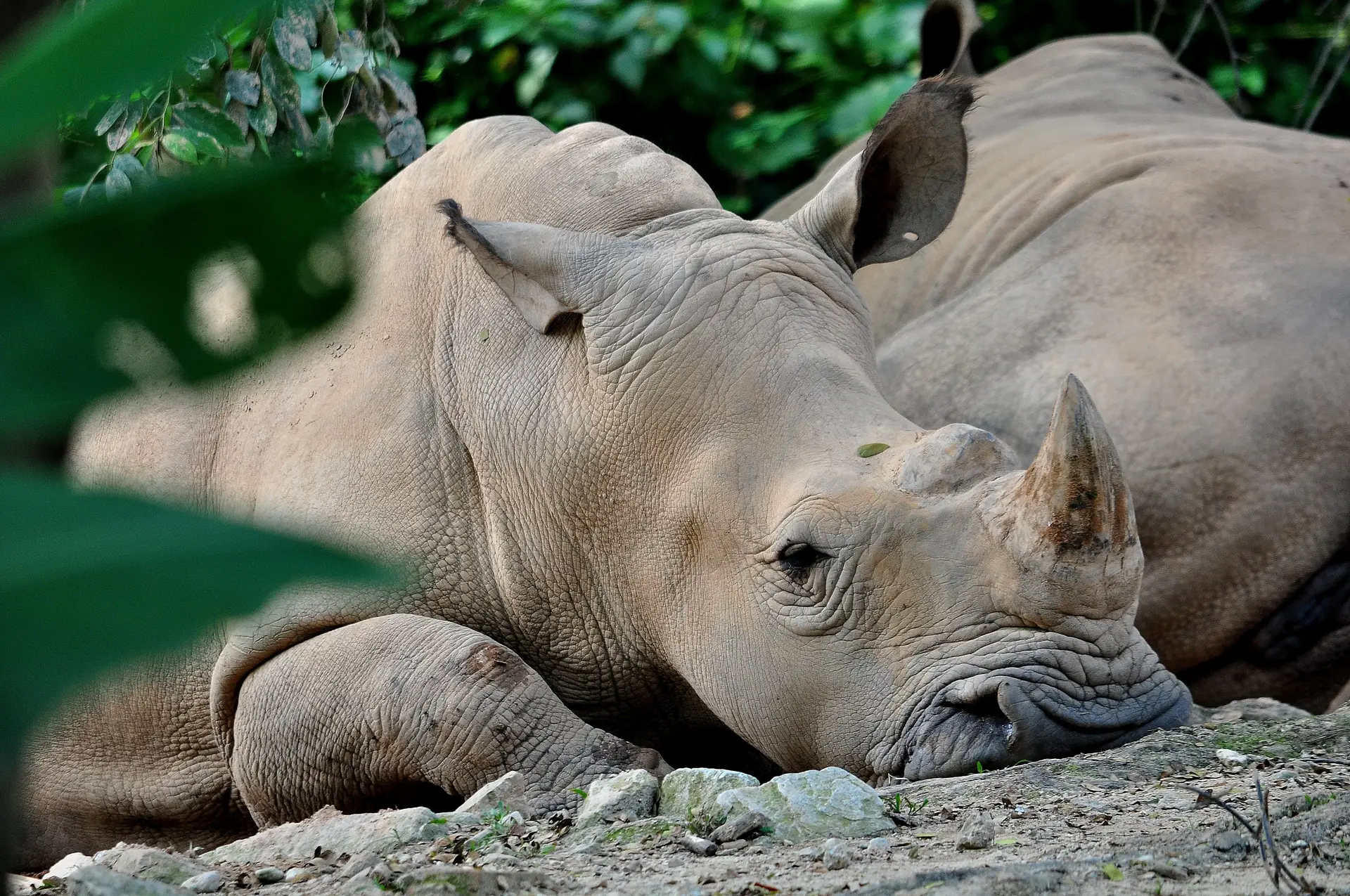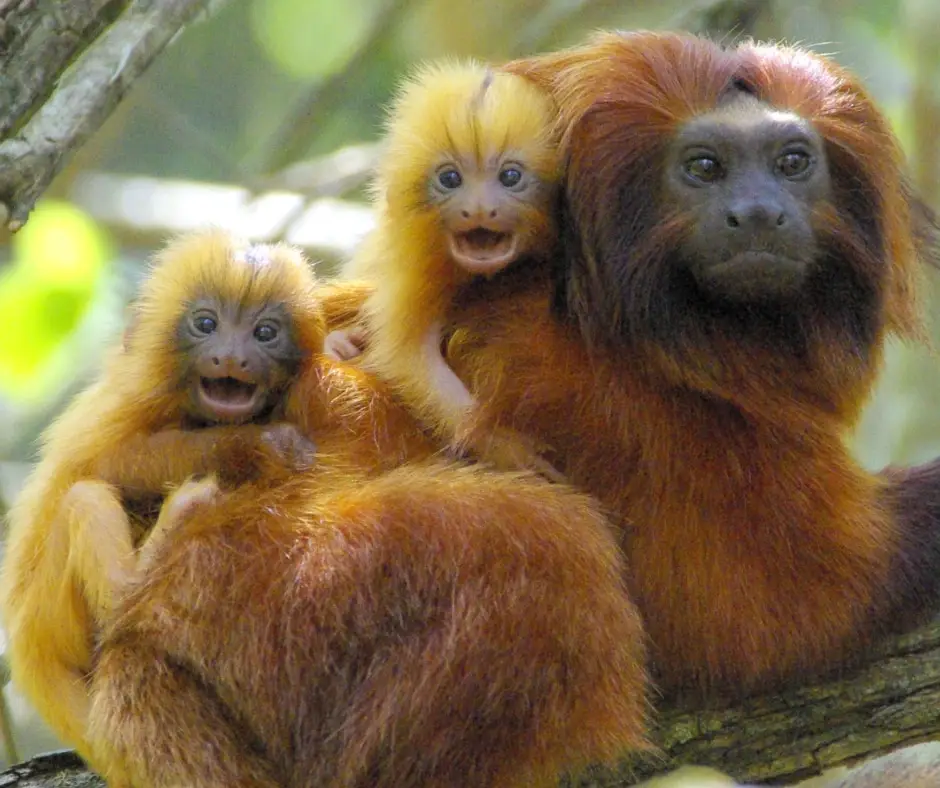The species the world lost this decade
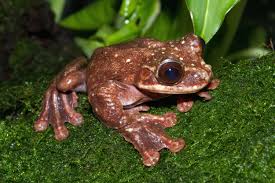
December 9, 2019
As the world continues to lose species 1,000 time faster than normal, Saving Nature’s Stuart Pimm reflects on what we have learned about how many species we’re losing, where we are losing them, and how well we’re protecting them.
The species the world lost this decade
In this article for VOX.com. Brian Resnick makes the case that humans are killing earth’s biodiversity, now adding climate change to the list of causes.
He collectively eulogizes the 467 species have been declared extinct and calls attention to others precariously teetering on the brink, and those experiencing serious declines in their population numbers.
The article highlights the casualties of the extinction crisis, the underlying causes for the loss of biodiversity, and the possibility of rescuing species from their current plight through thoughtful conservation interventions.
China Plans to Create ‘Yellowstone’ on Tibetan Plateau
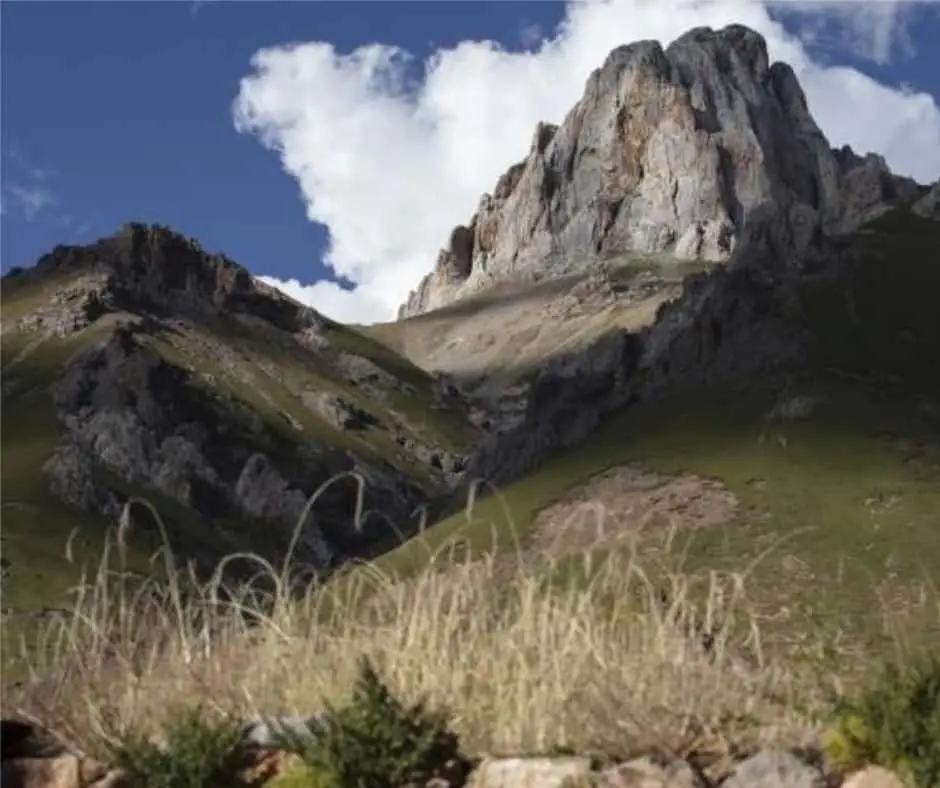
November 12, 2019
In this article published by Phys.org, Saving Nature’s Dr. Stuart Pimm was asked to share his perspective on China’s ambition to create a unified park system that balances conservation and tourism, while safeguarding community livelihoods and culture.
China Aims to Build its Own Yellowstone on Tibetan Plateau
As China continues to expand into previously remote areas of the country, there is a new ethos emerging. In their modernization push to transform the Tibetan Plateau, there is now a new dimension to government planning – conserving natural resources.
The Chinese government is working to set limits on the region’s growth in order to implement its own version of one of the U.S.’s proudest legacies—a national park system.
The ambition to create a unified park system represents “a new and serious effort to safeguard China’s biodiversity and natural heritage,” Duke University ecologist Stuart Pimm says.
The vision is not without challenges, as explained in this month’s article in Phys.org. Read the full article here.

Bringing the World’s Buried Wetlands Back From the Dead
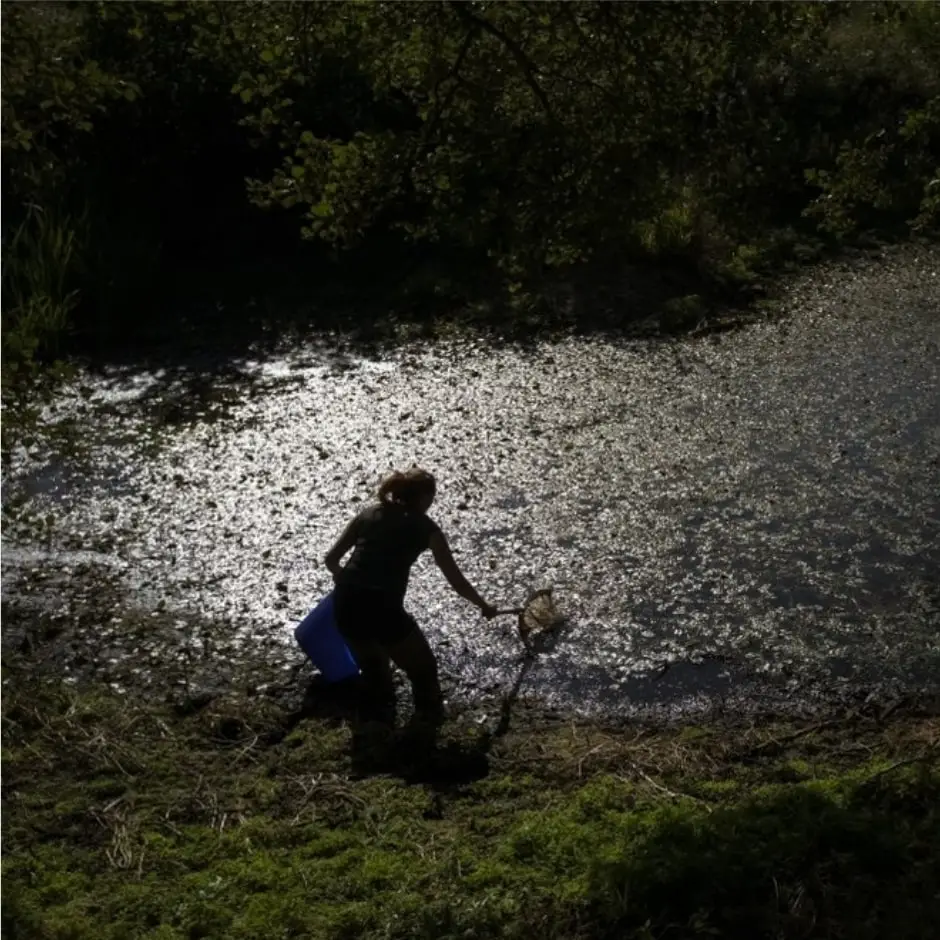
November 5, 2019
In this article published by AP News, Saving Nature’s Dr. Stuart Pimm was asked to comment on the effectiveness of the “No net loss wetlands” policy that aims to balance development and conservation.
Bringing the World’s Buried Wetlands Back From the Dead
Over the last three centuries, we have lost almost 90% of the world’s wetlands, according to the Ramsar Convention, an organization formed to protect global wetlands. Since its adoption in 1971, the loss of wetlands has only accelerated.
But there is renewed hope for wetlands restoration, thanks to efforts to unearth wetlands buried decades ago to expand agricultural production. Farmers, ranchers, and conservationists are now joining forces to integrate wetlands into a sustainable future.
Both the U.S. and China have adopted “no net loss” of wetlands as a guiding principle in balancing development and conservation. The framework requires that any destruction of wetlands be offset by wetlands reclamation, mitigation, and restoration efforts, including man-made replacements.
“People brag about the fact that there’s been no net loss. But what they’ve done is destroy natural wetlands and created artificial ones,” says Stuart Pimm, a Duke University professor.
Read the full article here.

A Baby Elephant’s Rescue
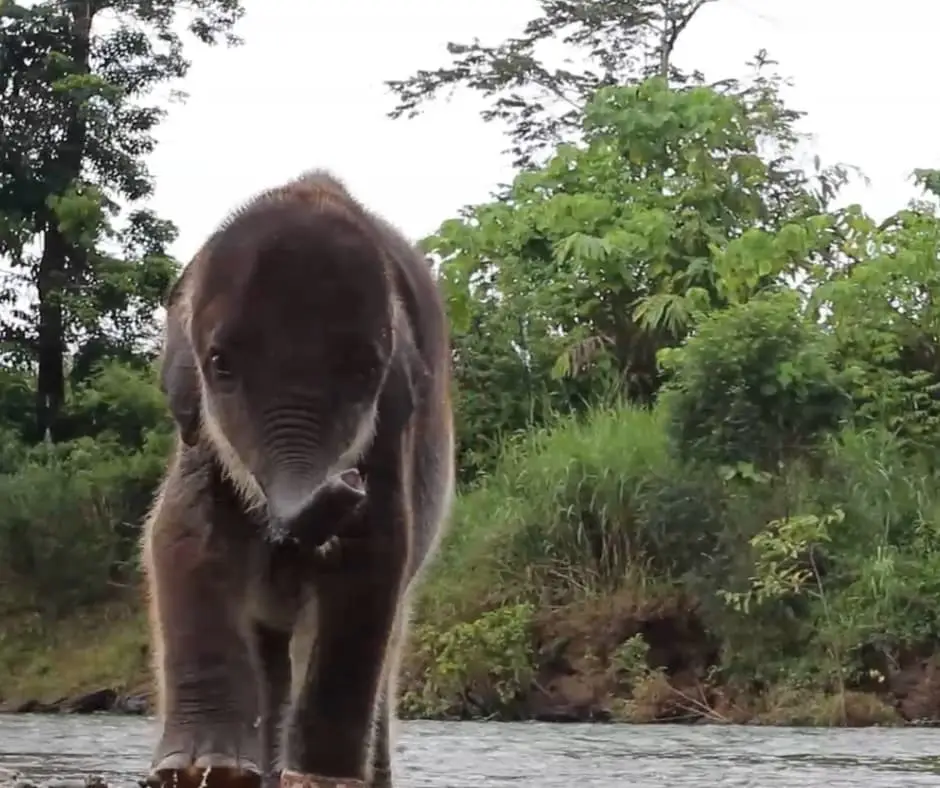
Remembering Baby Salma
Sadly, Salma died from her injuries sustained from a poacher’s snare on early on Friday, February 7, 2020. We are very saddened by this senseless loss. In sharing the news about Salma’s passing, Rudi Petra writes:
“Forgive us for failing to return you to the mother who gave birth to you, Salma. We understand your longing for your mother & best friends. We know the task of saving you is only a small part of the burden we carry. We will never give up. We will continue to fight and protect your relatives, families that are still alive and your home. We believe that one day we can save them from extinction, because only by protecting the place you play we can survive for life. Rest in peace Salma.”
We share the story of her rescue to honor those who work tirelessly to save her.
Surviving a Poacher's Snare
June 16th, 2019
by Rudi Petra, Leuser Conservation Forum (FKL)
In the afternoon of June 16th, 2019, a local community member notified Leuser Conservation Forum (FKL) staff that a baby elephant had been caught by a snare on her leg at a village in rural part of Aceh Timur. At that moment, our staff contacted a veterinarian to save this baby elephant. The next day, the mission to save the elephant began.
Elephants are known to be very smart, and instinctively find a way to save injured members of their group. Working in the Leuser Ecocystem, the FKL rangers get calls about elephants bringing their injured young to an area nearby a community village – maybe hoping someone will help rescue them. Several rescue missions the FKL rangers have conducted with Aceh’s Natural Resources Conservation Agency have been very close to settlements.
A recovery team set out, following the footsteps of the baby elephant, including FKL’s Elephant Protection Team, the veterinarian, Aceh Natural Resources Conservation Agency staff, Forest Management Unit Regional 3, and local community members.
After two days of tracking the baby elephant through the forest, parts of her footsteps were lost….The team became more and more hopeless, but remained determined to continue until they found and treated the baby.
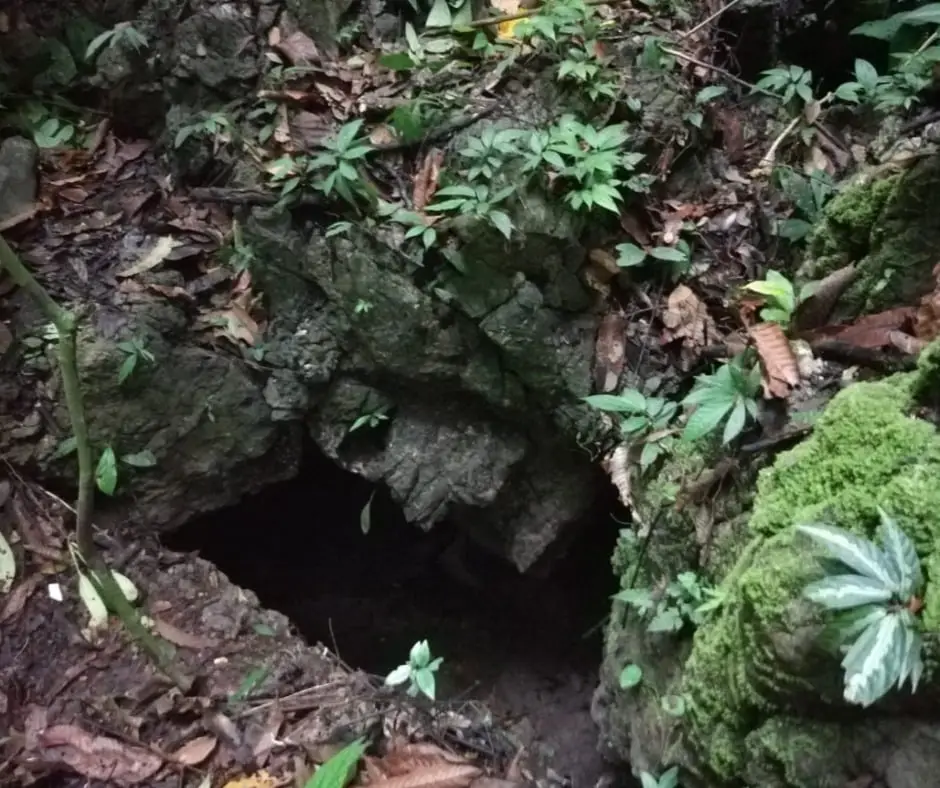
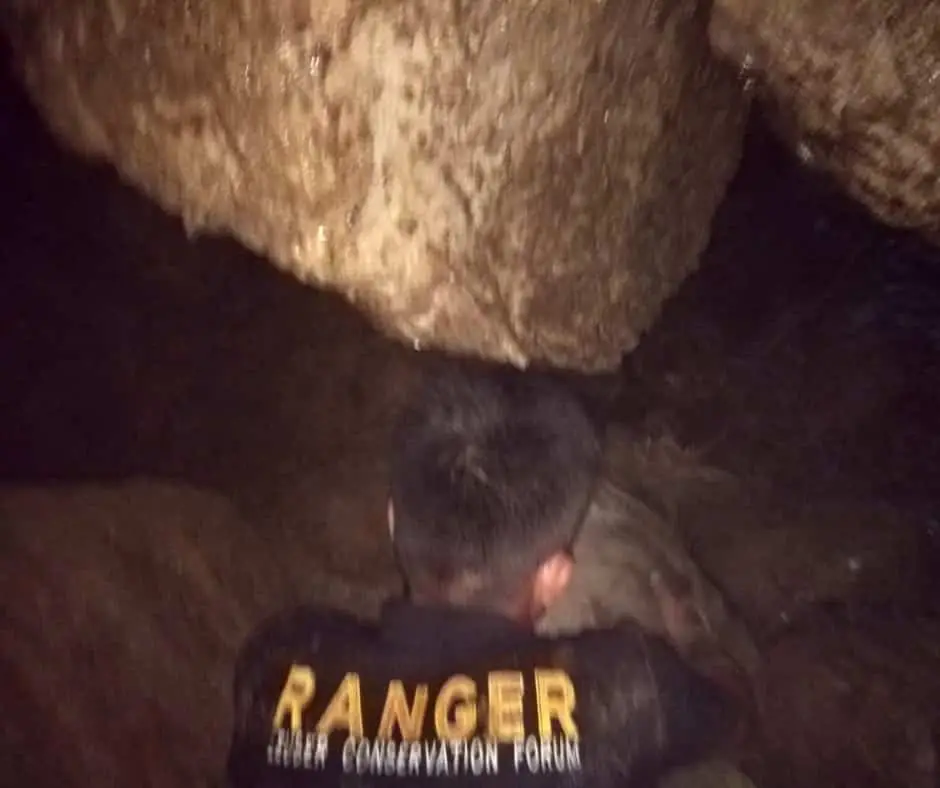
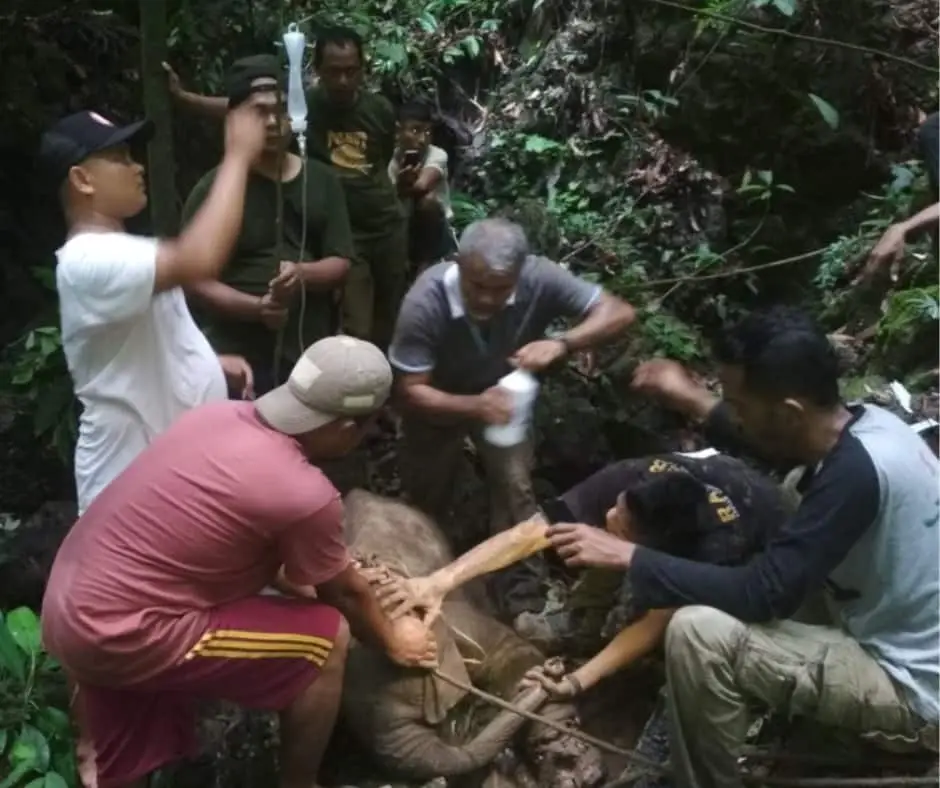
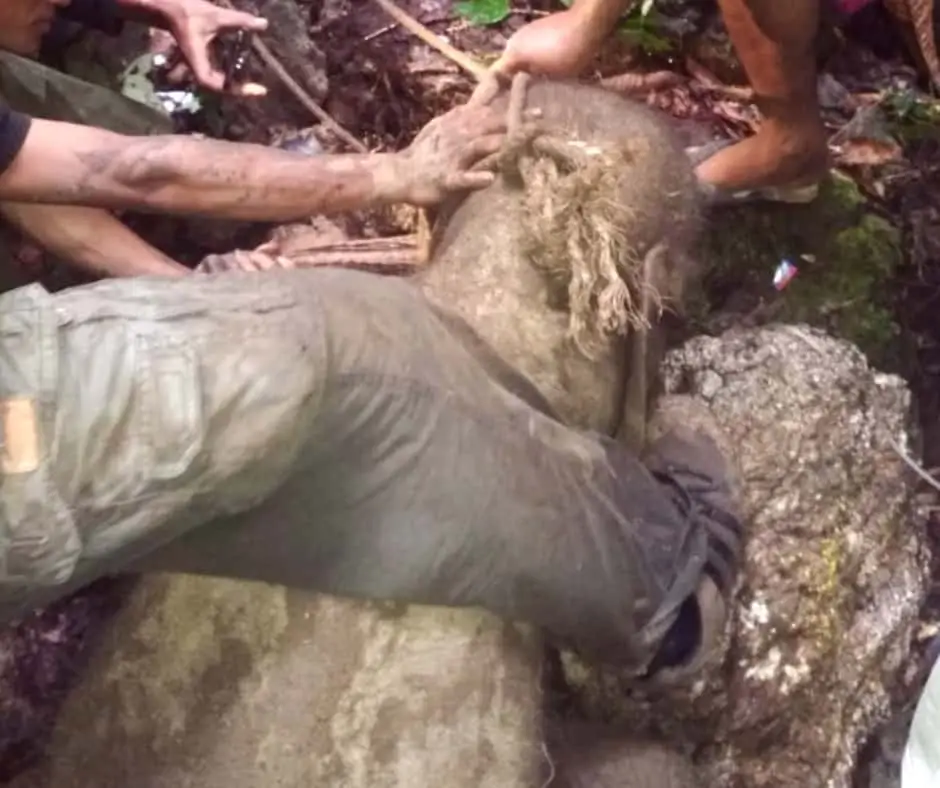
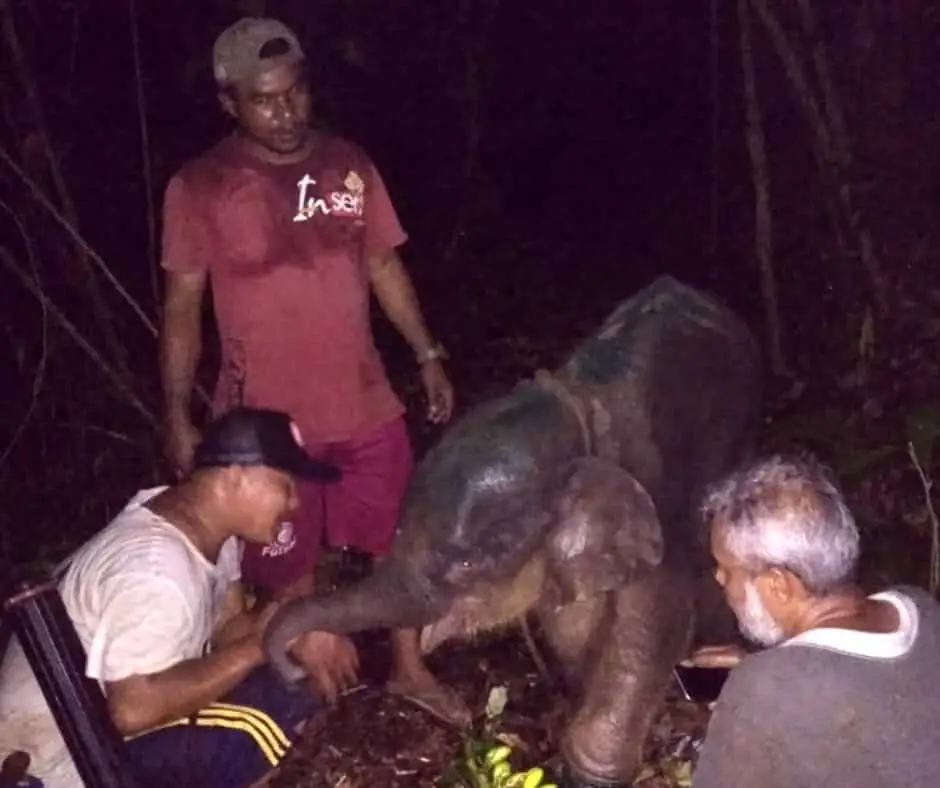
The Rescue
The team continued to search and walked until they came across a hole approximately 2 meters deep. It was inside this hole, a soft sound was heard.
The team tried to find the source of the sound, and that is where they found the weak baby elephant. Lying there distraught, maybe the elephant is no longer able to walk and wants to end her life there until her final breath.
Two members of the Elephant Patrol Team braved themselves to enter the cave to save the elephant, but her rescue was far from certain. Despite being very weak, the injured baby elephant still showed her wild nature.
With two rangers pushing below in the darkness of the cave, and another dozen using ropes from above, the team tried their very best to pull Salma from the hole.
The Frontlines of conservation
FKL’s team of 148 trained rangers patrol 13,500 square kilometers in Sumatra’s Leuser Ecosystem. In 2018, they found 843 snares set by poachers targeting protected wildlife.
In 2019, FKL’s rangers rescued 3 elephants and 1 sun bear caught in snares. They also recovered 2 hornbills and 1 orangutan from villagers intending to sell them on the black market.
Sumatran elephants, rhinos, tigers, pangolins, helmeted hornbills, and orangutans are all listed as Critically Endangered on the IUCN Red List. Their populations are declining worldwide due to poaching and habitat loss. As they disappear from other forests, the survivors face even more pressures. International poachers move into the last places where supply can be found for body parts for the Chinese black market.
Poaching is rising at an alarming rate in the last of Sumatra’s forests, with an influx of hunters from Central Sumatra and other Asian countries targeting elephants, rhinos, tigers, pangolins, hornbills, and wild birds.
With insatiable demand on the black market for tusks, horns, feathers, skins, and other body parts used in traditional medicine, cultural rituals, and decorative arts, species are moving closer to extinction.
The Leuser Ecosystem offers one of the last places where there is hope to rescue them from the brink of extinction. Connecting the two large remaining protected areas will help enormously. Restoring forests hinders access deeper into untouched areas. Returning failed farms and plantations to forest is vital to a sustainable future.
But time is critical in the race against the relentless demand. As the forests continue to recede, access becomes easier for poachers. Already driven to extinction in other parts of Indonesia, these vulnerable species, the last of their kind on earth, are now in the cross hairs.
In 2018, Saving Nature launched a 3-year initiative to build a wildlife corridor in Leuser to combat the loss of habitat, reestablish elephant migration routes, and build a buffer against poachers.
Our long-term goal is to connect a 5,500-ha area recently designated by the government as an elephant conservation area with nearly 300,000 ha of protected forest.
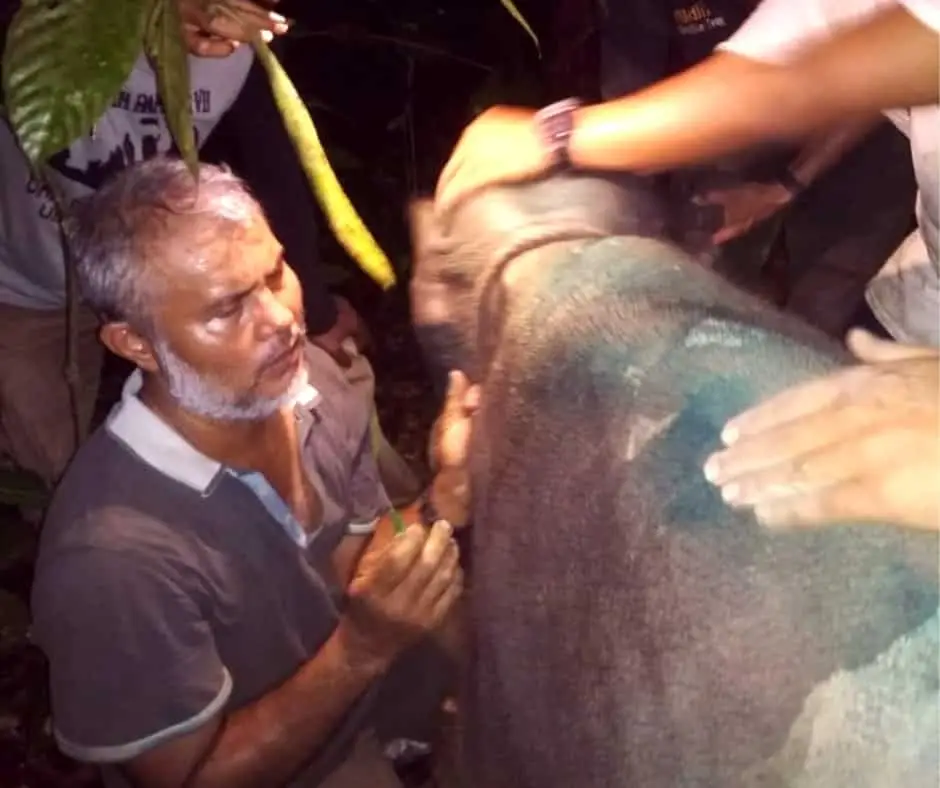
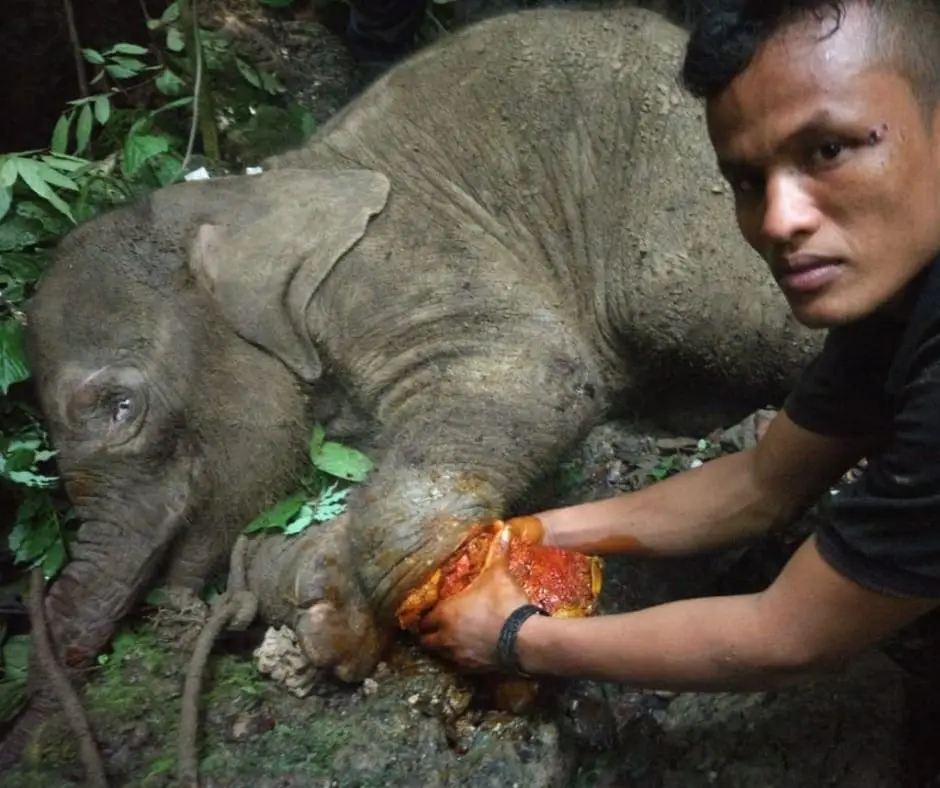
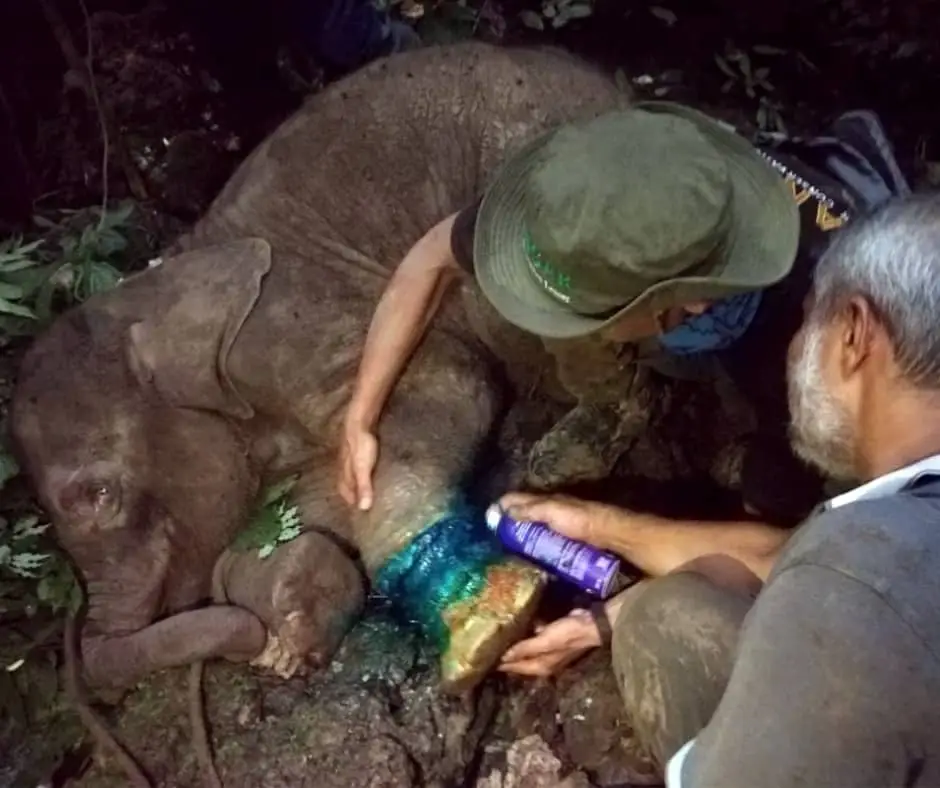
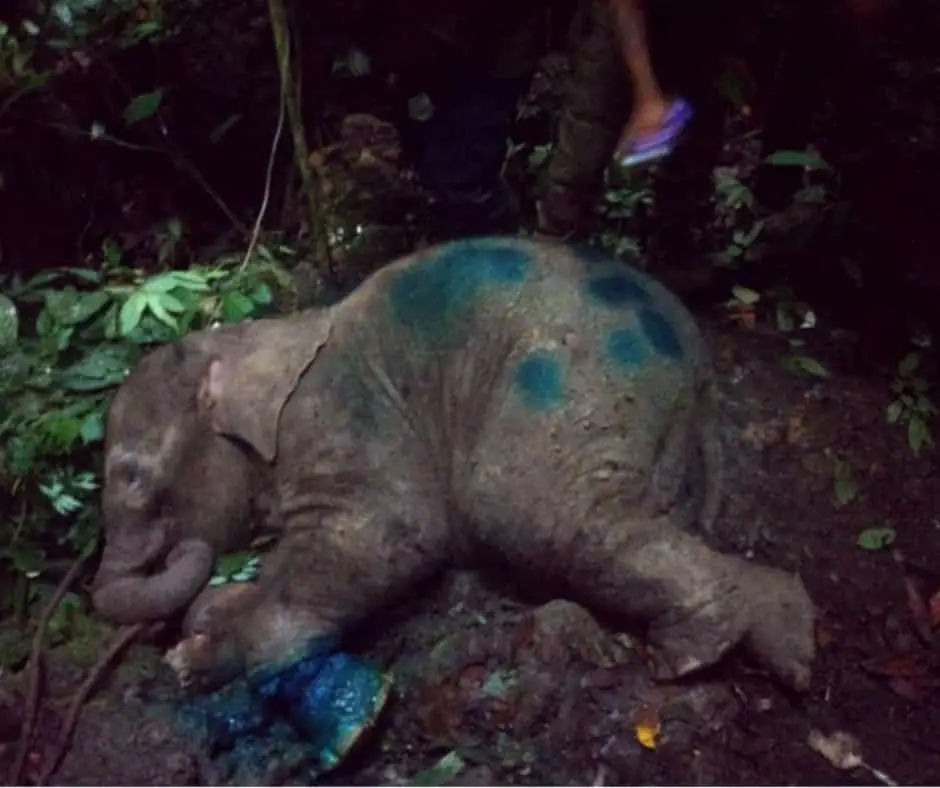
Field Triage
Finally, at 5 o’clock in the afternoon, the elephant was out of the dark cave. The veterinarian immediately injected anesthesia into the elephant, and worked to remove the snare, clean, and treat the wound.
The snare resulted in a very deep wound that came close to injuring the bones. Infection also could have killed this amazing creature.
We were very pessimistic looking at the condition of this baby elephant, but whatever the risk facing ahead, this elephant must be saved.
The Evacuation
To evacuate this little elephant was no easy feat. The location was very far from the nearest settlement. The team used a boat to go along the river to the closest settlement before it is brought on to a car.
In the middle of the night, we received help from the local community who provided the boat that is then used to bring the elephant. The elephant’s long journey began. To reach the closest settlement took 2 hours, then a 7-hour drive on land.
It was not over yet. ..
The elephant took another boat ride to reach the elephant camp, Conservation Research Unit (CRU) Serbajadi, in East Aceh. She will spend her time recovering here until she is ready to be released back in the wild to meet her family.
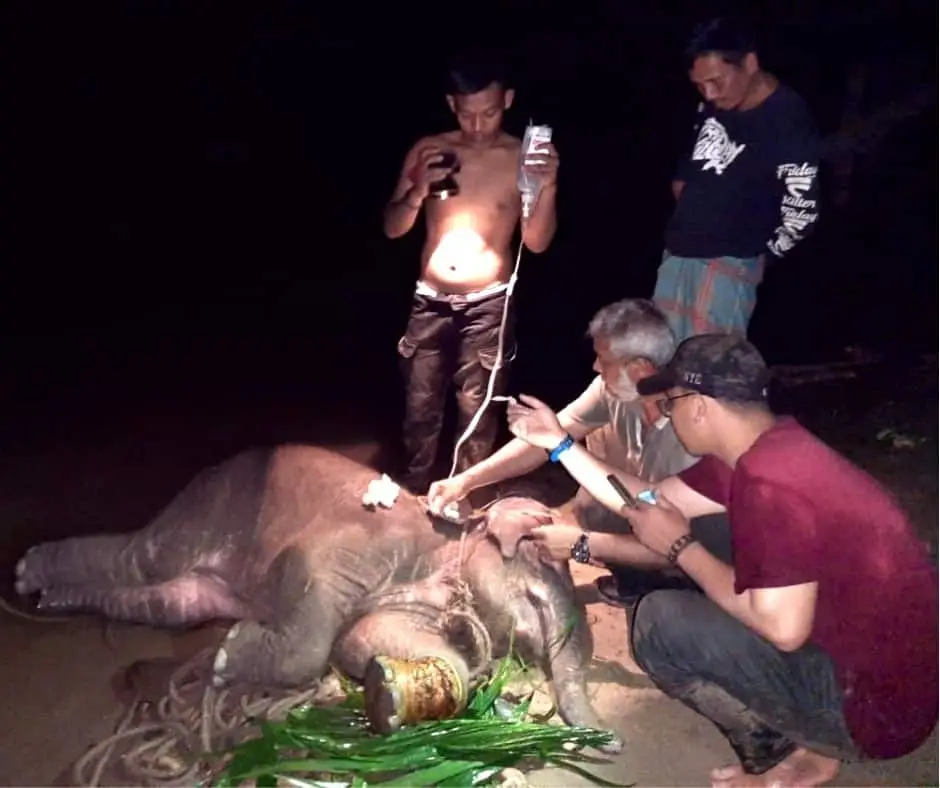
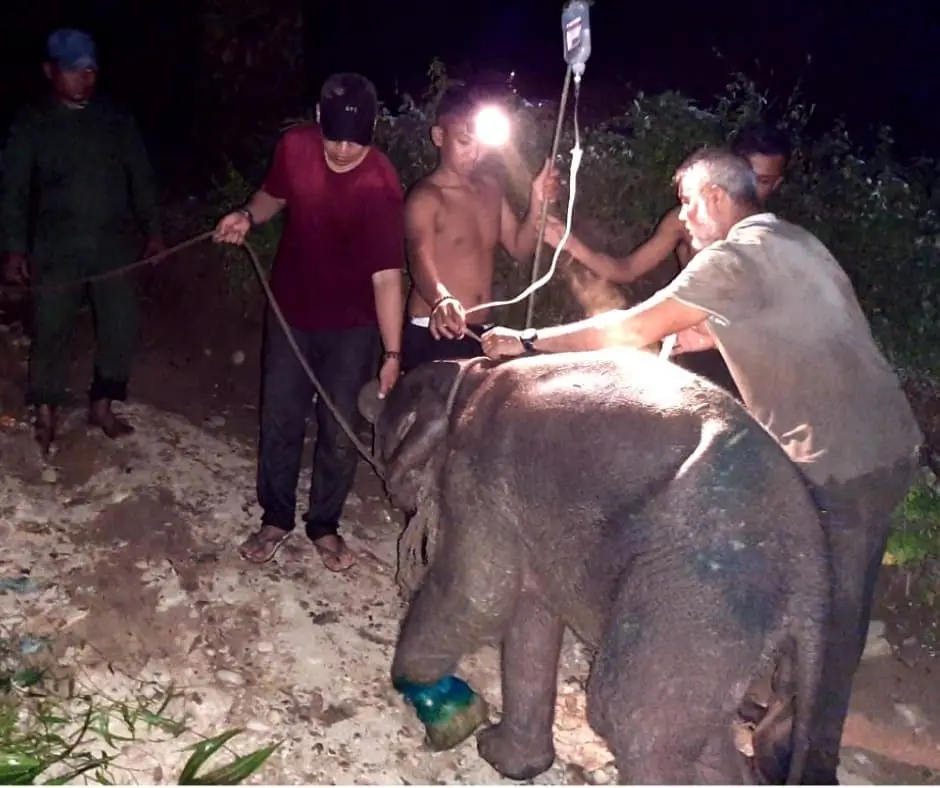
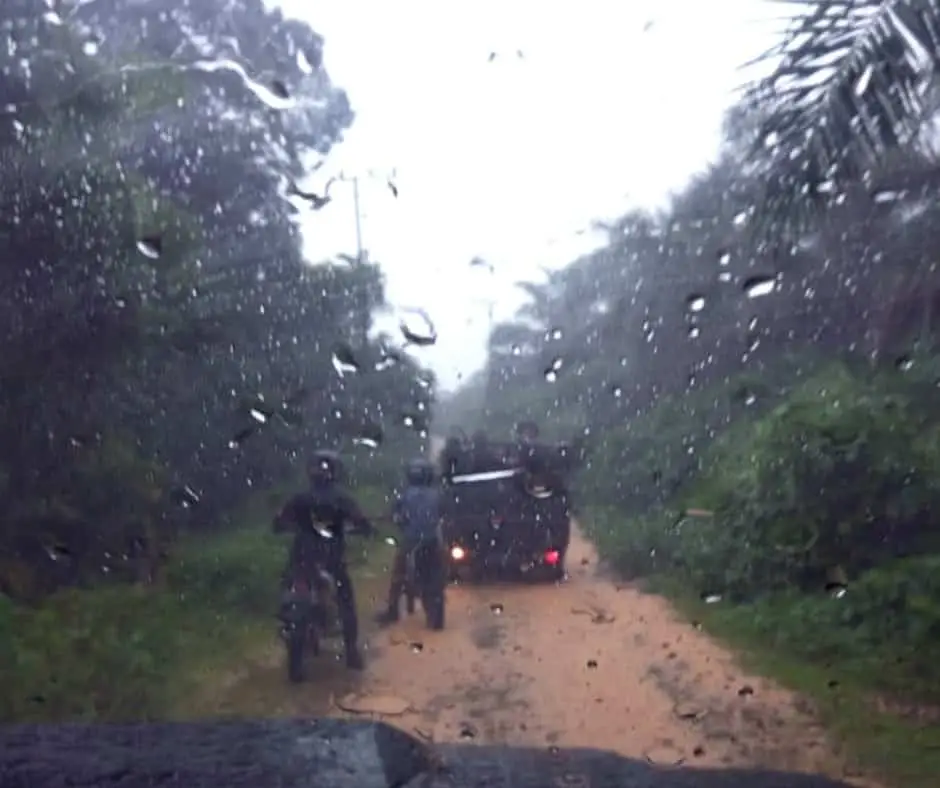
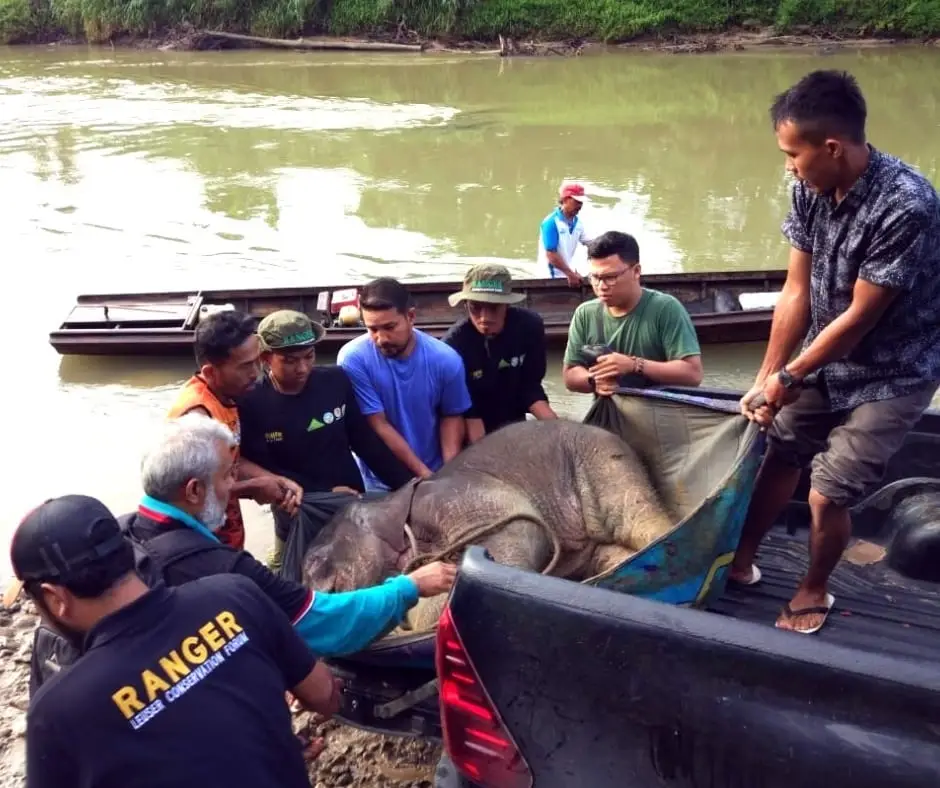
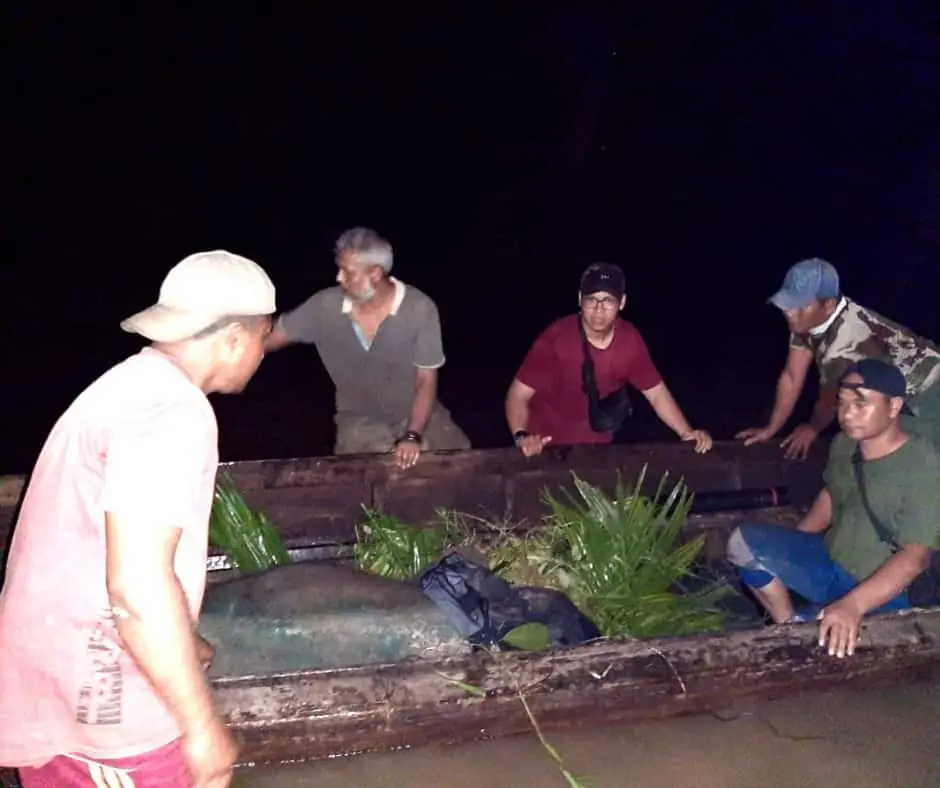
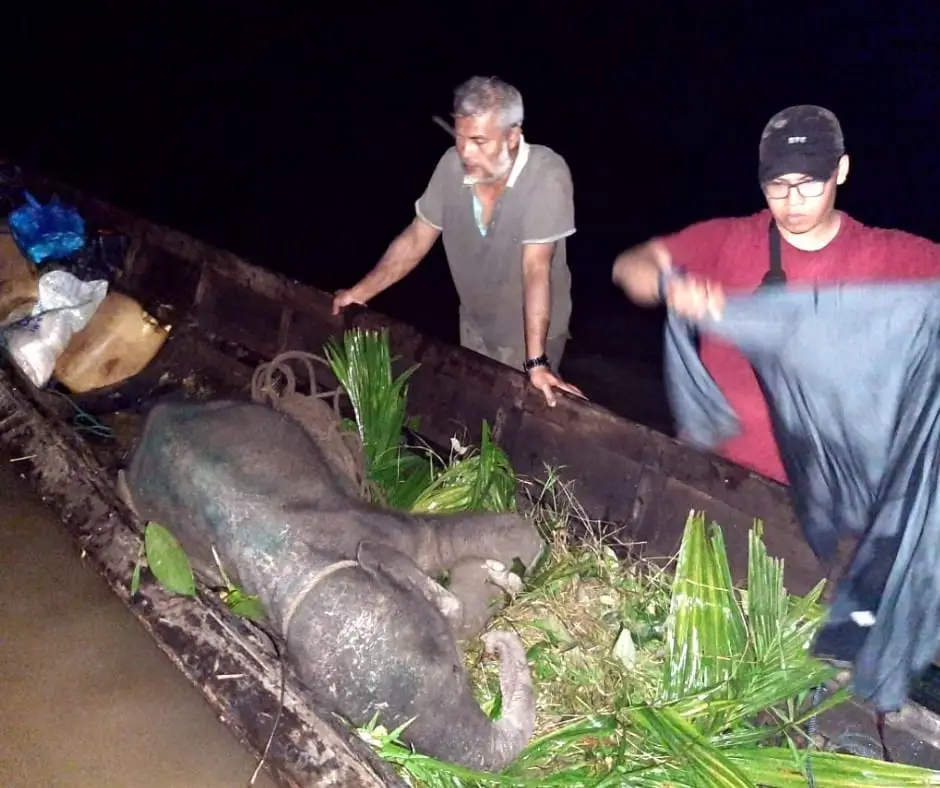
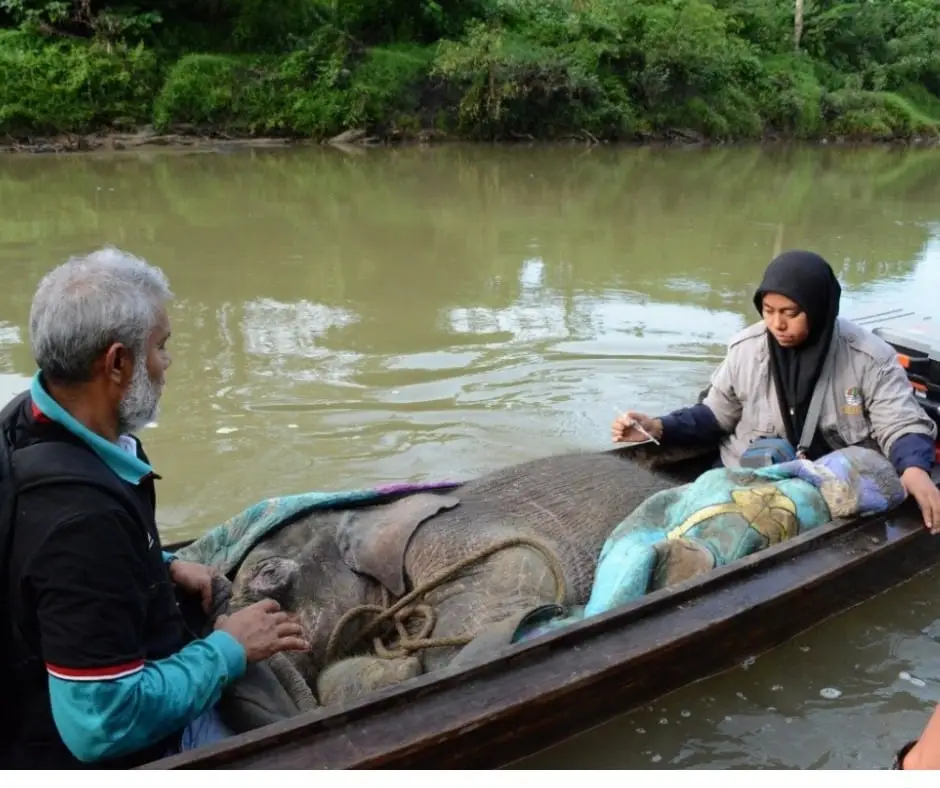
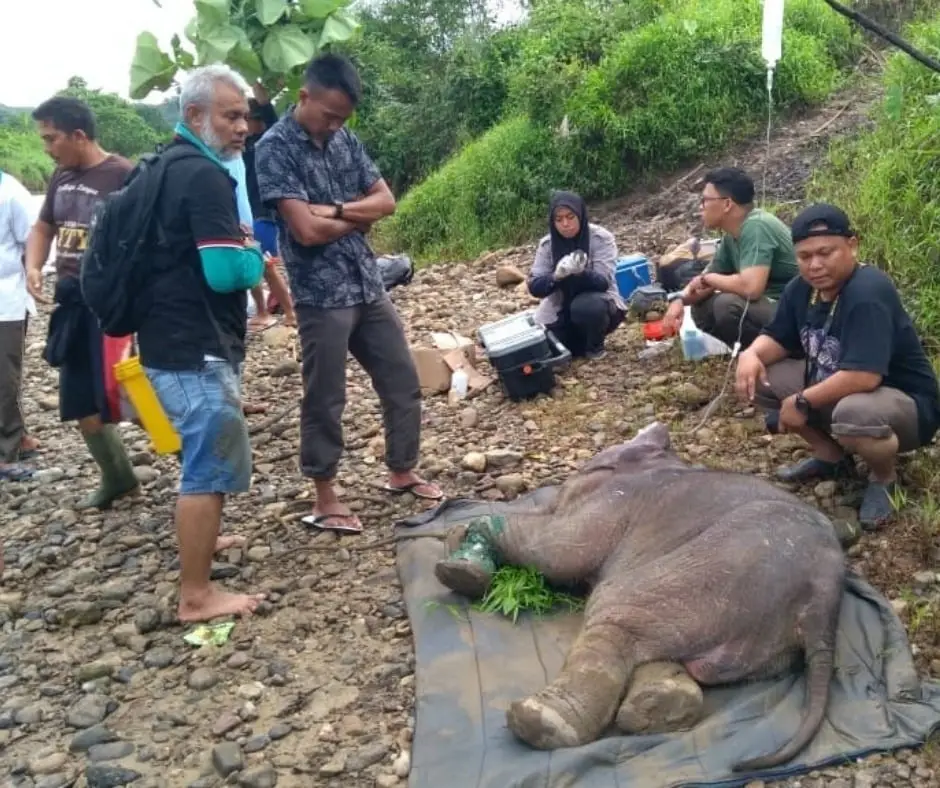
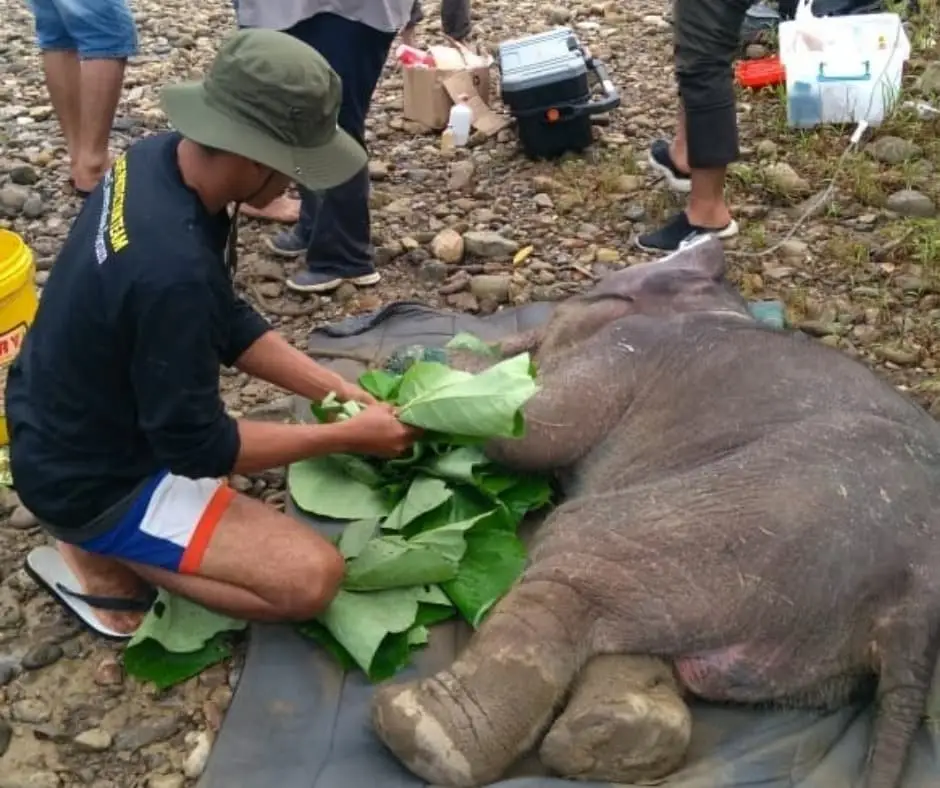
The recovery
With all our willpower, we try our best to ensure the rescue of the elephant.
The first weeks was a very difficult time for the elephant to live among humans. But at the very least, she feels comfortable. She is able to sleep surrounded by humans and happy to be fed milk.
Our staff is on standby monitoring 24 hours, 7 days a week. She is now recovering, socializing with other tame elephants at the camp, and has recently started eating grass as well.
The cute elephant is loved by the team and staff at the camp. It is unthinkable that anyone would injure her. The elephant is later named Salma (an acronym for “Save the Wildlife in Leuser and Aceh Communities” in Bahasa Indonesia).
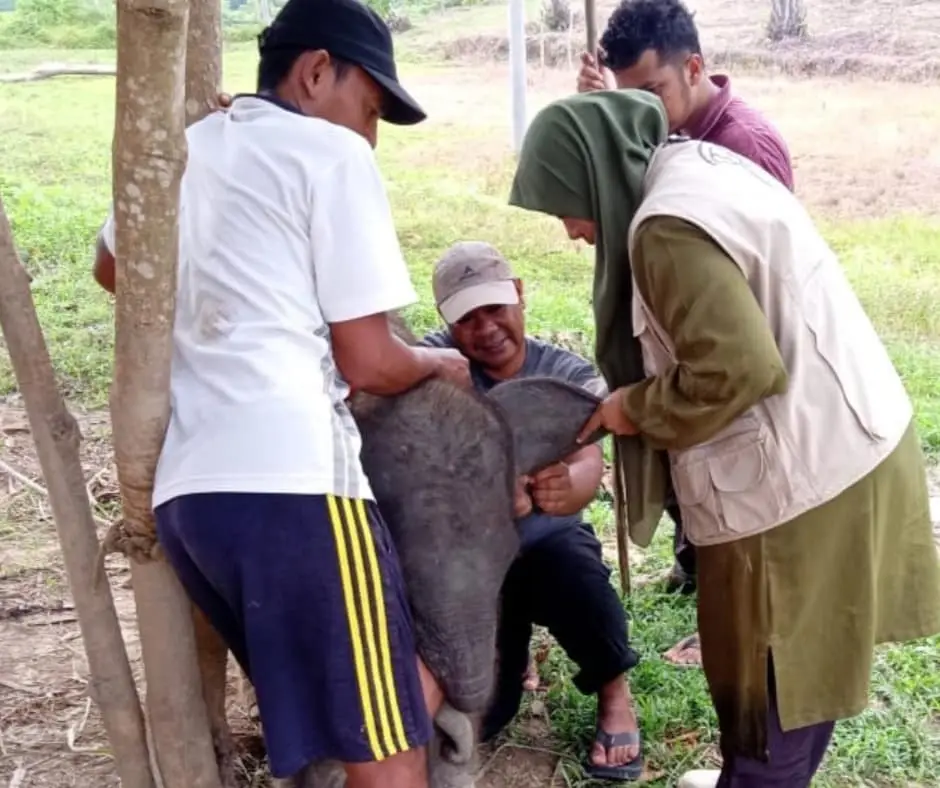
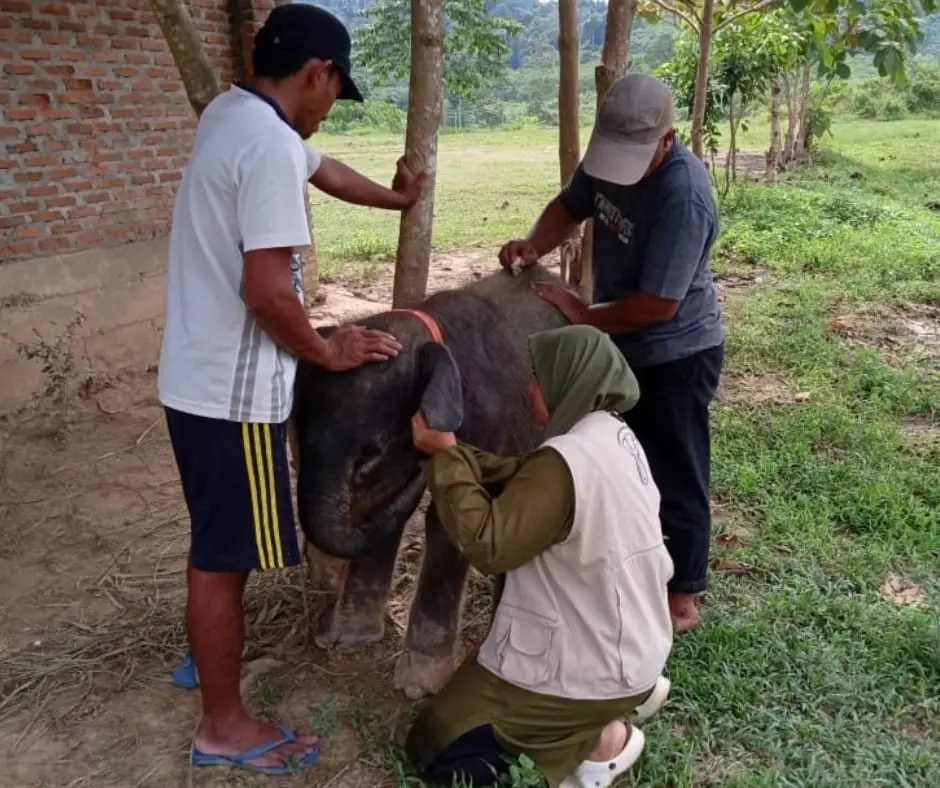
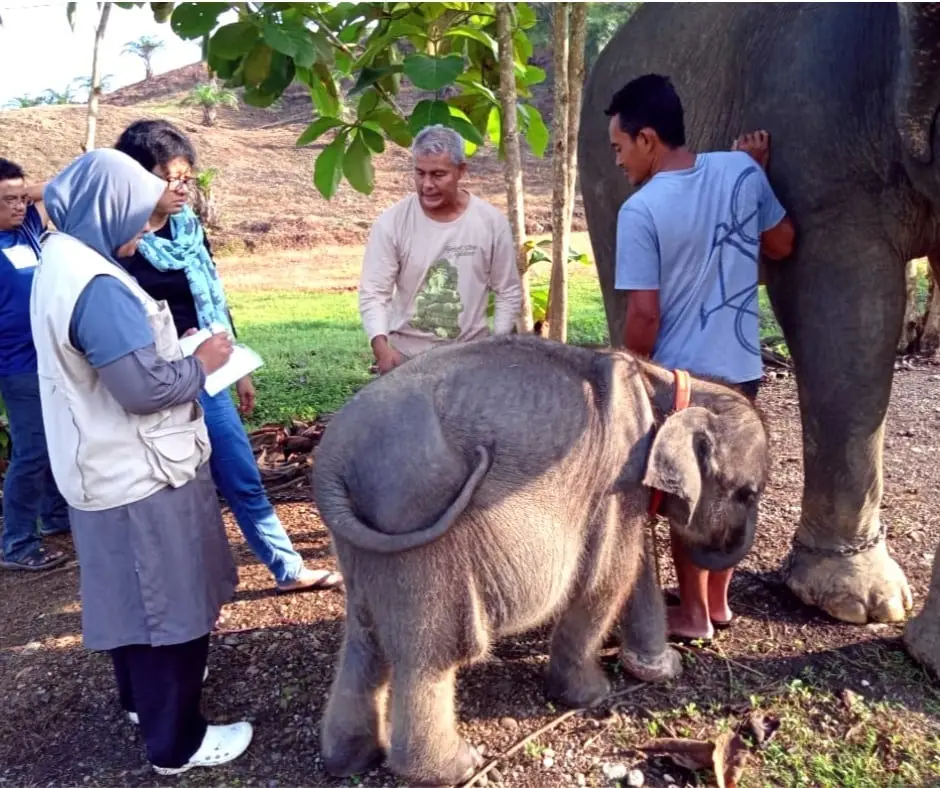
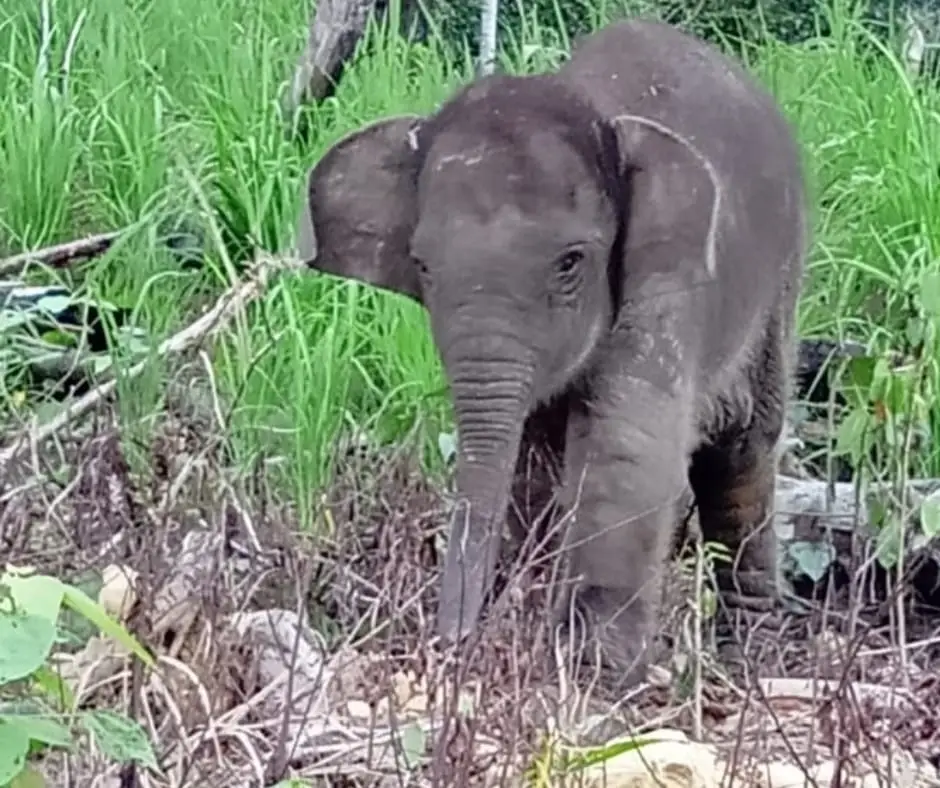
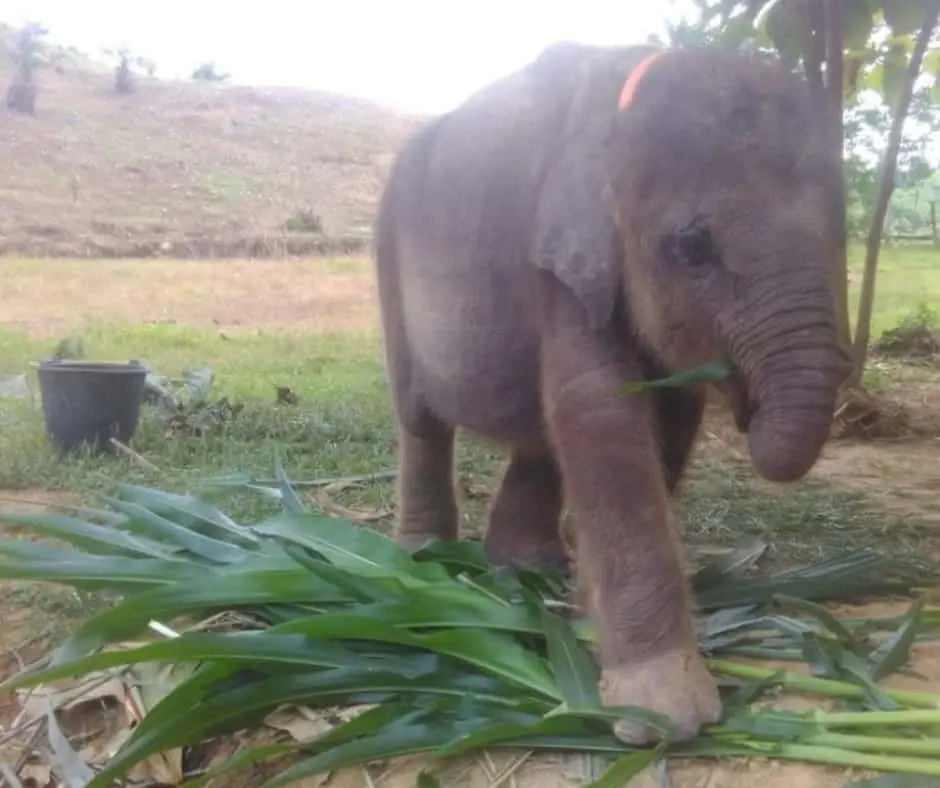
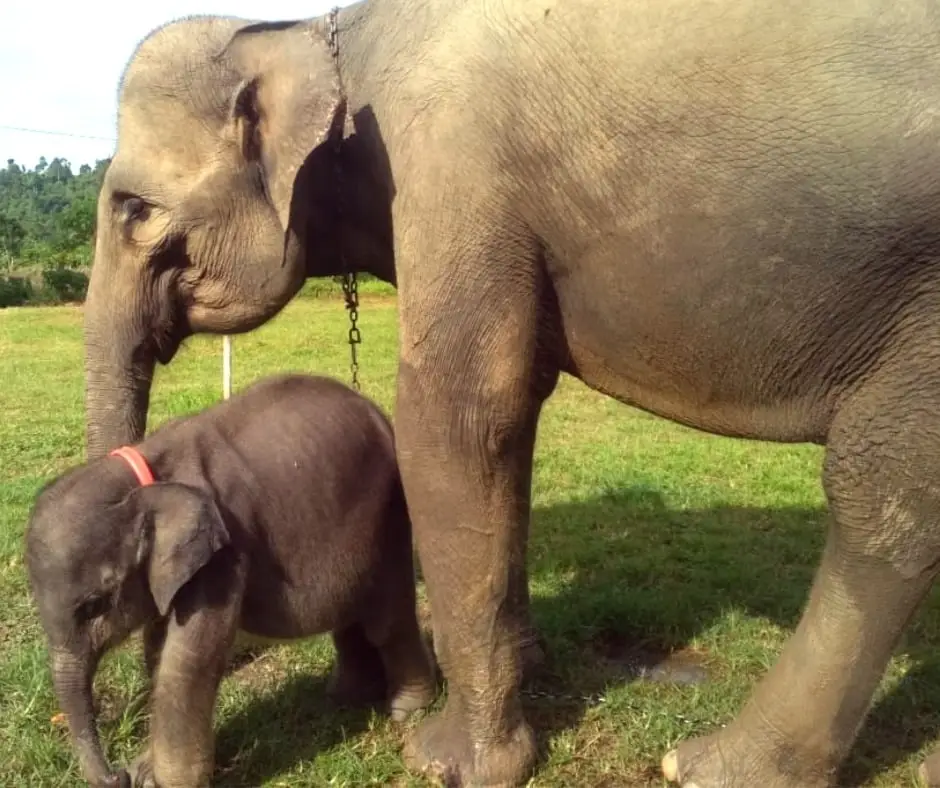
sumatra's wildlife needS A refuge
Help build a connection to the future for the wildlife of Leuser. Take a stand for their last refuge by rescuing this vanishing ecosystem, preventing the loss of biodiversity, and building resilience to fight the impacts of climate change.
ABOUT LEUSER CONSERVATION FORUM (FKL)
Leuser Conservation Forum (FKL) was founded in 2013 with a mission to help save the Leuser Ecosystem in Aceh and North Sumatra Provinces. The Leuser Ecosystem is a 2.6 million hectares expanse of forest rich in biodiversity. Today, FKL deploys 26 units of Wildlife Protection Team across the Leuser Ecosystem in Aceh specifically to treat, rescue elephants and other wildlife injured. With more than 200 people in the field, FKL’s protection unit is the biggest managed by a local NGO in Indonesia.
6 Awesome Biodiversity Infographics
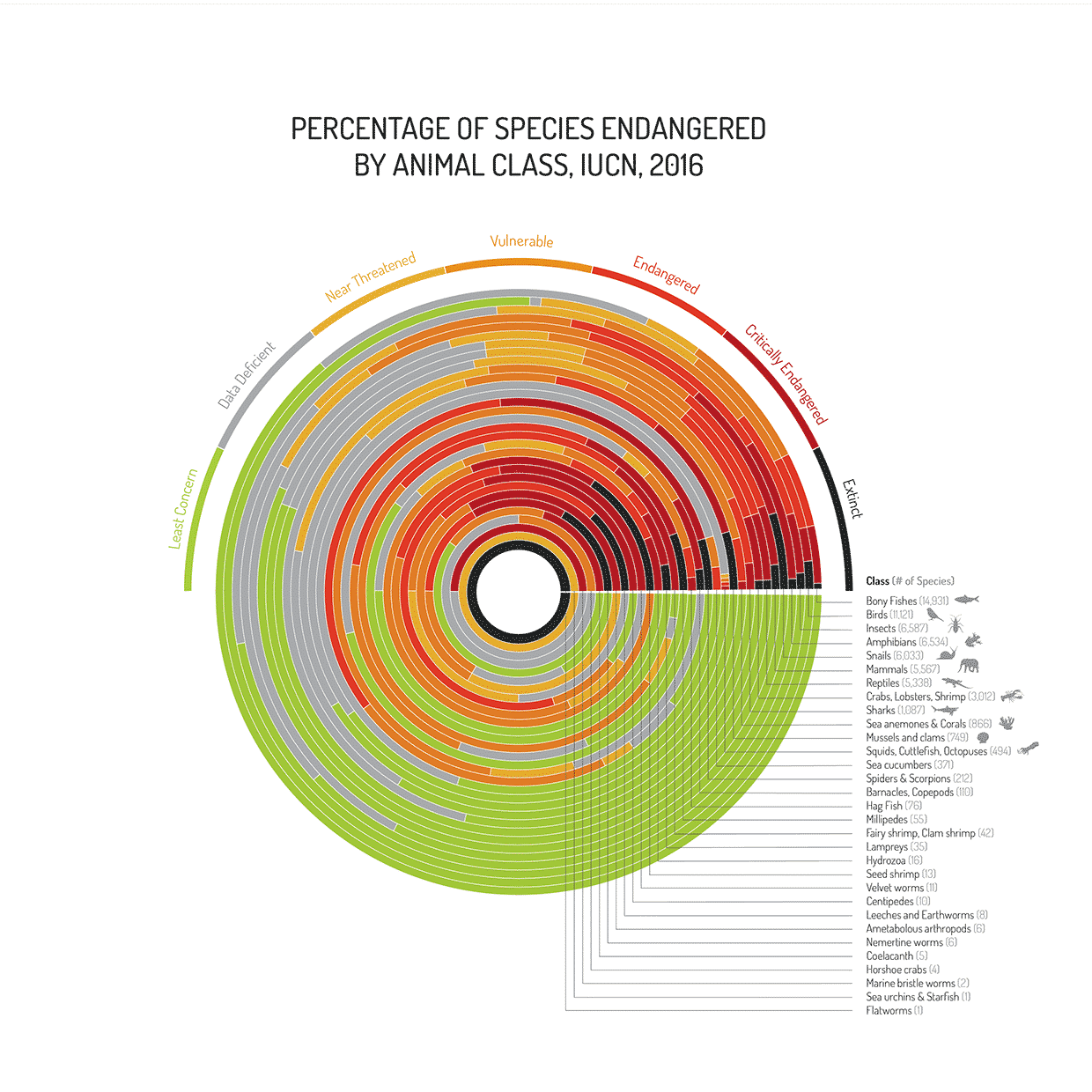
6 AWESOME BIODIVERSITY INFOGRAPHICSS
A picture is worth a thousand words and biodiversity is only one word. An important one, yes, but one that people have trouble understanding. These five infographics paint a narrative of biodiversity on the brink of extinction, habitat destruction, and climate change. Together they are a call to action while there is still time to reverse the trajectory.
Red List of Threatened Species (IUCN)
This disarmingly simple graphic by the IUCN gives a voice to threatened and endangered species, with pleas from threatened species (“Please help”) and endangered species (“I can’t last much longer”), and a declaration from extinct species “Dead”). The infographic message is compelling “Just because they can’t talk, doesn’t mean we shouldn’t be listening.”
Endangered Species – Top 20 Countries (IUCN)
A map of the world has countries colored according to the number of species at risk. The list of countries includes icons to show the number of endangered species in each group of animals. Ecuador is top of the list because of large numbers of endangered amphibians and plants(s. The United States is second with numerous endangered marine species.

Rhino Conservation Infographic – TRICIA HOPE
This infographic highlights the urgency of rhino conservation, with dwindling number of every species of rhino.
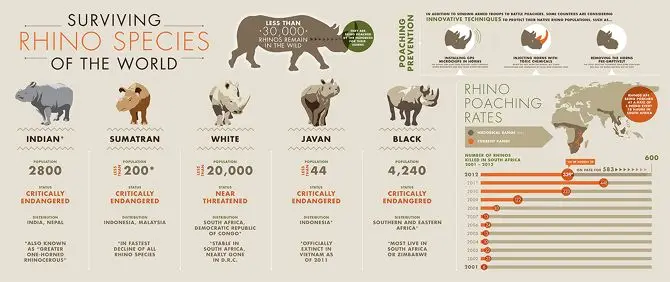
Diversity of “Species” in the Rainforest (Oro Verde)
This spoof poster illustrates different types of machines that are used in removal of rainforest, whether for lumber or just for clearance. It’s a testament to human ingenuity if not our common sense.
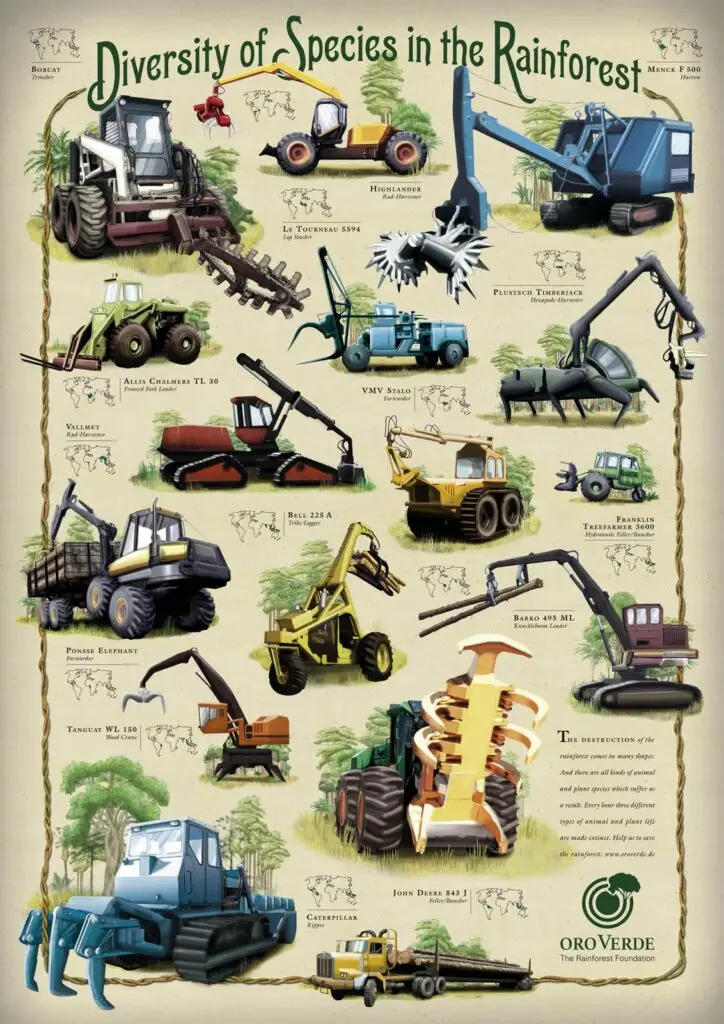
Deforestation
This infographic depicts the consequences of the “ingenuity” in exploiting forests shown in the previous infographic. A dire picture of the death of our forests, with a prescription for change.
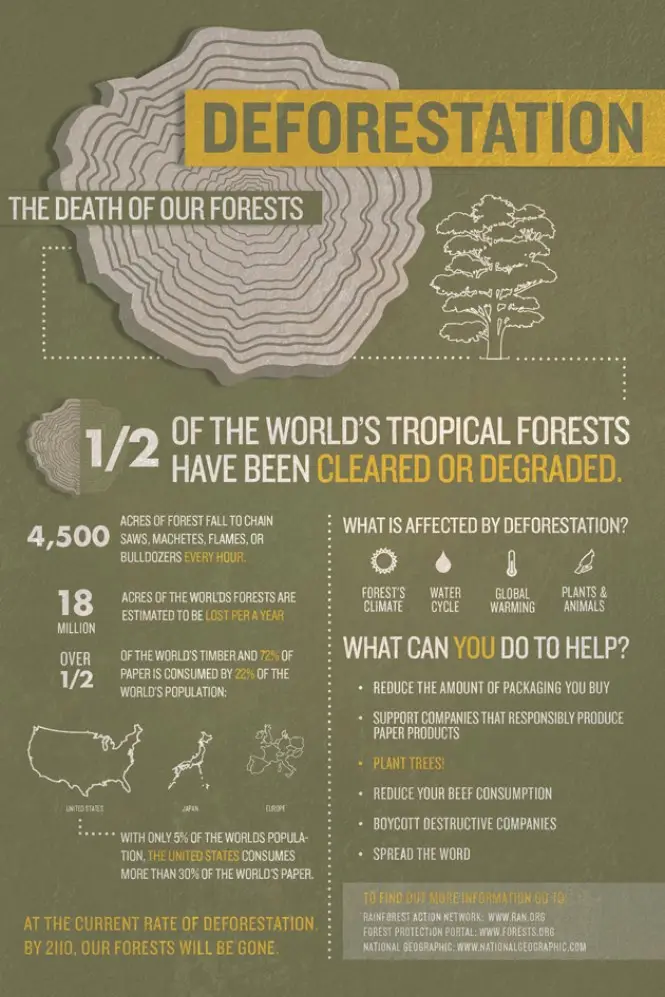
Climate Change (Stanford Art Studio)
This infographic shows the flip side to deforestation as the biggest contributor to climate change – our unrelenting carbon dioxide emissions. Here we can clearly see the combination of per capita emissions and the multiplicative effects of our growing population.
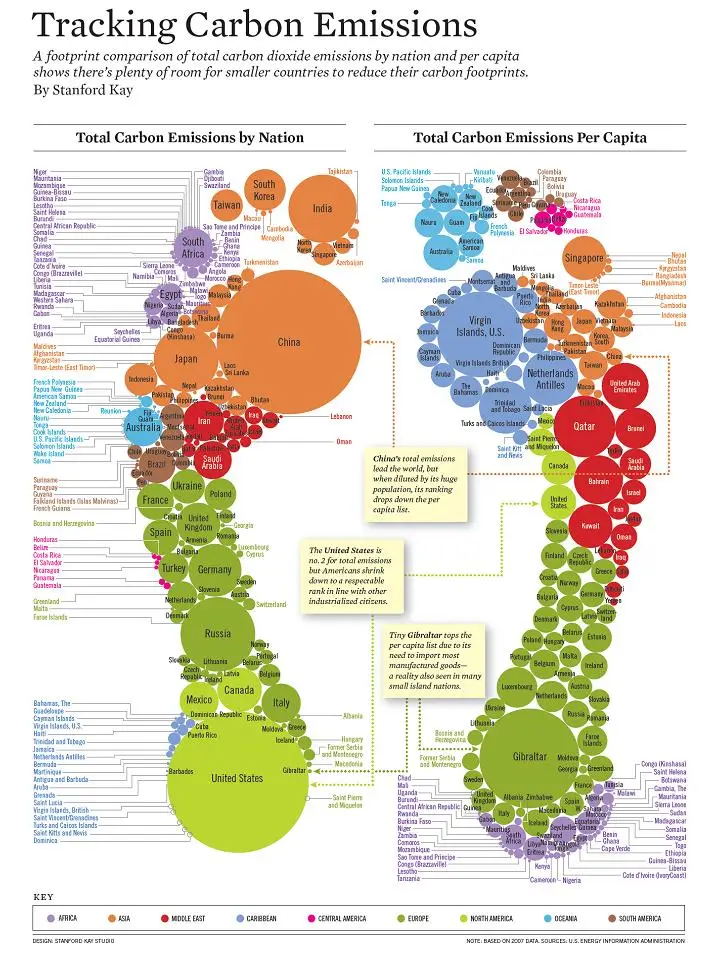
Measuring Resilience Is Essential To Understand It

October 10, 2019
In this recent paper published in the October 2019 Issue of Nature Sustainability, Dr. Pimm and his colleagues make the case for using data to more precisely define and apply key terminology used in conservation science.
MEASURING RESILIENCE IS ESSENTIAL TO UNDERSTAND IT
Stuart L. Pimm, Ian Donohue, José M. Montoya and Michel Loreau
Words matter, especially when trying to accomplish something as important as stopping the loss of biodiversity or fighting climate change.
Stuart Pimm and his colleagues make the case that scientific terms need measurement to ensure their meaning is explicit. The link between words and evidence requires rigor in defining how we measure, what we measure, and over how long we measure. “Talk is cheap, measurements hard.” comments Pimm in his recent blog for Nature Sustainability, “Without them, we have no way to compare what we are doing for good or ill to the natural world.”
The authors consider ubiquitous terms like sustainability, resilience and others grouped under the heading of ‘stability’. These terms speak vital need to characterize changes in complex social and environmental systems. In a bewildering array of terms, practical measurements are essential to permit comparisons and so untangle underlying relationships.

The Health of Our Oceans: Seabirds as Sentinels.
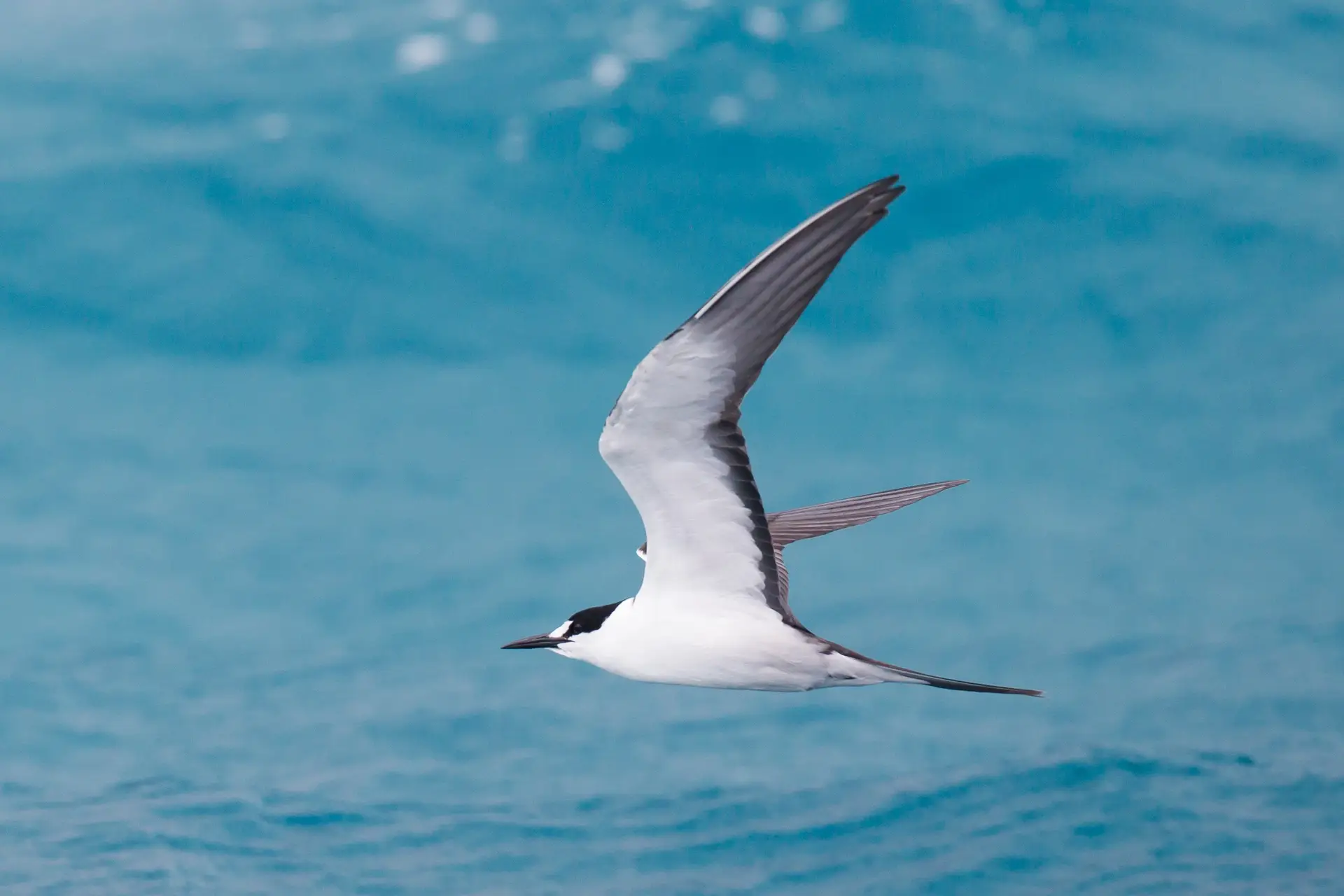
September 16, 2019
The Bird Catchers
A FILM BY JAMES ROBINSON
Sooty terns have been returning to the Dry Tortugas National Park in the Florida Keys to breed from mid-January through July for untold years. Scientists have been there to meet them since the 1930’s. An ambitious research project has collected decades of data on over 500,000 birds to help reveal the secrets of their life at sea.
Scientists can learn a lot from the terns about climate change and the health of our oceans. Because of the extensive area covered on their ocean journeys, terns are yielding new insights about how humans are altering the planet. Unfortunately, most of the insights come from mortalities of the terns.
But first, they have to catch them.
We recently got a unique perspective on what it takes to monitor the 500,000 sooty terns that have been banded over the life of the project. Created by James Robinson, a student at Duke University, we see the project through the eyes of young scientists following in the footsteps of Dr. Pimm to collect the data needed to understand our planet through the journey of the terns.
In the eight decades since research began, sooty tern populations on the Dry Tortugas have dropped 84 percent, from 3 million birds to around 350,000. Their struggles could point to troubling changes in our oceans and our climate. Rising sea levels are flooding nesting grounds. More frequent and intense storms are battering terns in the open ocean. Over-fishing is depleting their food supply.
What We’ve Learned About Hurricanes
Dr. Ryan Huang, a scientist from Duke University led a recent study on the connection between hurricanes and seabird deaths. A new map produced by the research shows that sooty terns leave their breeding colony at Dry Tortugas National Park in the Florida Keys each June as hurricane season starts. They migrate southward and eastward across the Caribbean through summer and early fall, before skirting the northern coast of South America and arriving at their winter habitat off the Atlantic coast of Brazil in November.
Huang and his colleagues charted the migratory path by recording and mapping the dates and locations of all sooty terns banded for study at the Dry Tortugas since the 1950’s but found dead elsewhere. They also mapped locational data retrieved from birds that were fitted with satellite-telemetry tracking tags. When they overlaid all this data with maps of hurricane paths from the same period, they discovered a striking correlation between bird deaths and hurricanes.
Migration itself is a very stressful, very taxing process for these birds to undergo,” said Huang. “Encountering a storm adds even more stress, forcing the birds to fight strong winds and rain. Those that can’t handle that will likely die.” Unlike many shorebirds, sooty terns do not have special feather oils to help repel water, so they’re susceptible to drowning.
What We’ve Learned About Overfishing
In another recent study, tern feathers provided insights into the effects of overfishing. The feathers gave the scientists a window into broad changes in the terns’ diets over time. Starting at the end of the last century, presumably due to overfishing, the terns started eating more squid and small crustaceans, and fewer fish.
The change in diet corresponded with a decline in the sooty tern population. Fish are loaded with protein and fats and as such are a nourishing food source for seabirds and their fast-growing chicks; squid and crustaceans are not a good alternative.
Please support conservation efforts that fight climate change. For the terns. For all of us.
Living The Promise of the Tyler Prize
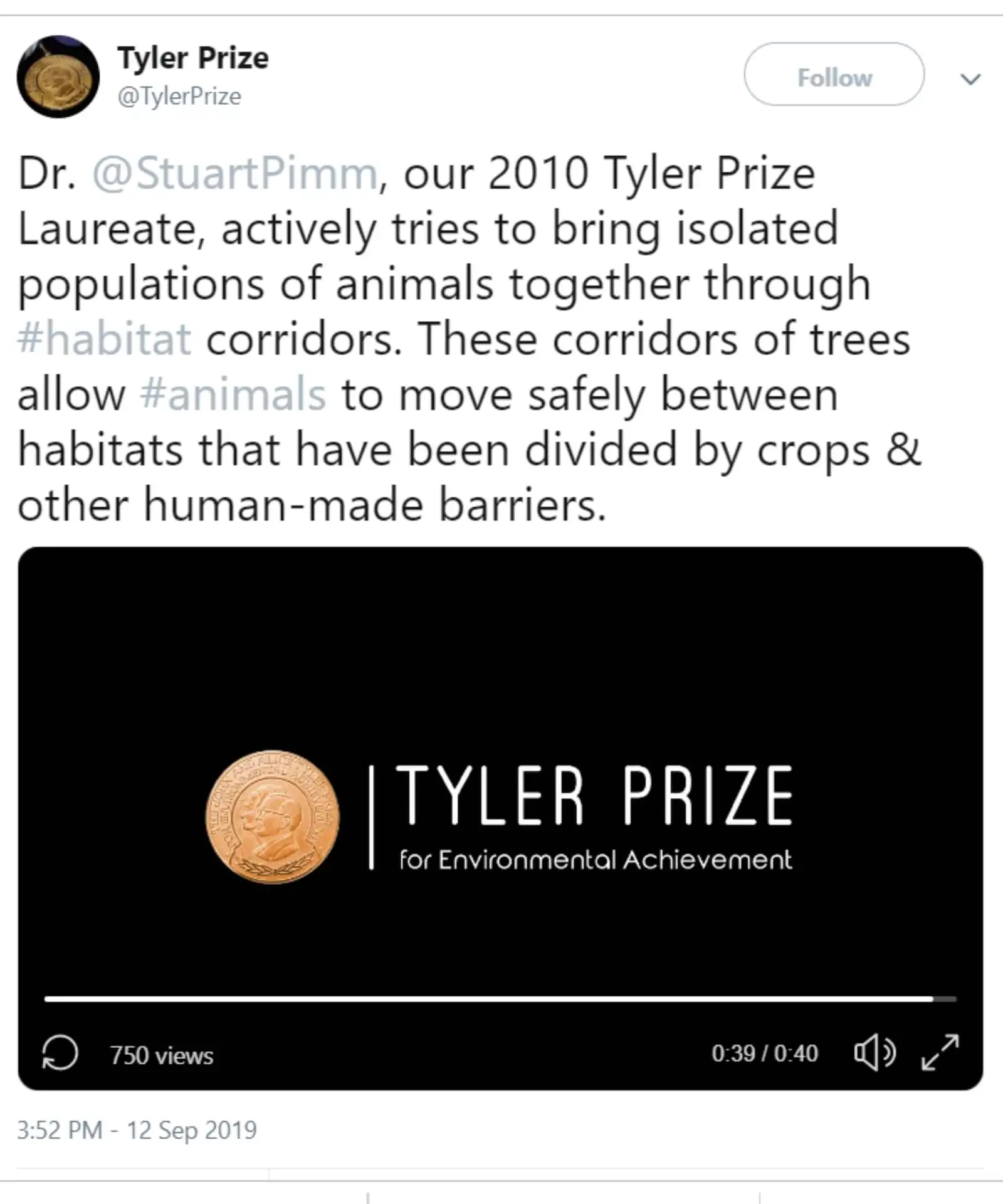
September 13, 2019: Tyler Prize Twitter
The problem as far as species extinction is concerned is that the tropical forest is where the wild things are,” Pimm said. “It’s where the greatest number of species is found.”
LIVING THE PROMISE OF THE TYLER PRIZE
In 2010, Stuart Pimm was awarded the Tyler Prize in recognition of his scientific contributions, his understanding of ecosystem functions, and his application of this knowledge to the management and restoration of ecosystems to the benefit of their inhabitants.
Considered the “Nobel Prize of environmental achievement,” the award was an important milestone in Stuart’s lifelong commitment to preventing the loss of biodiversity.
During his acceptance lecture, Pimm explained how human impact is causing species to become extinct 100 to 1,000 times faster than anticipated, and outlined practical solutions to the crisis.
Deforestation is not only the principal driver of extinction; it contributes 50 percent of carbon dioxide seeped to the atmosphere each year, Pimm said. That’s more carbon emission than all cars and trucks worldwide.
Recently, the Tyler Prize revisited Stuart’s continuing efforts, sharing a short video on Twitter about our work at Saving Nature.
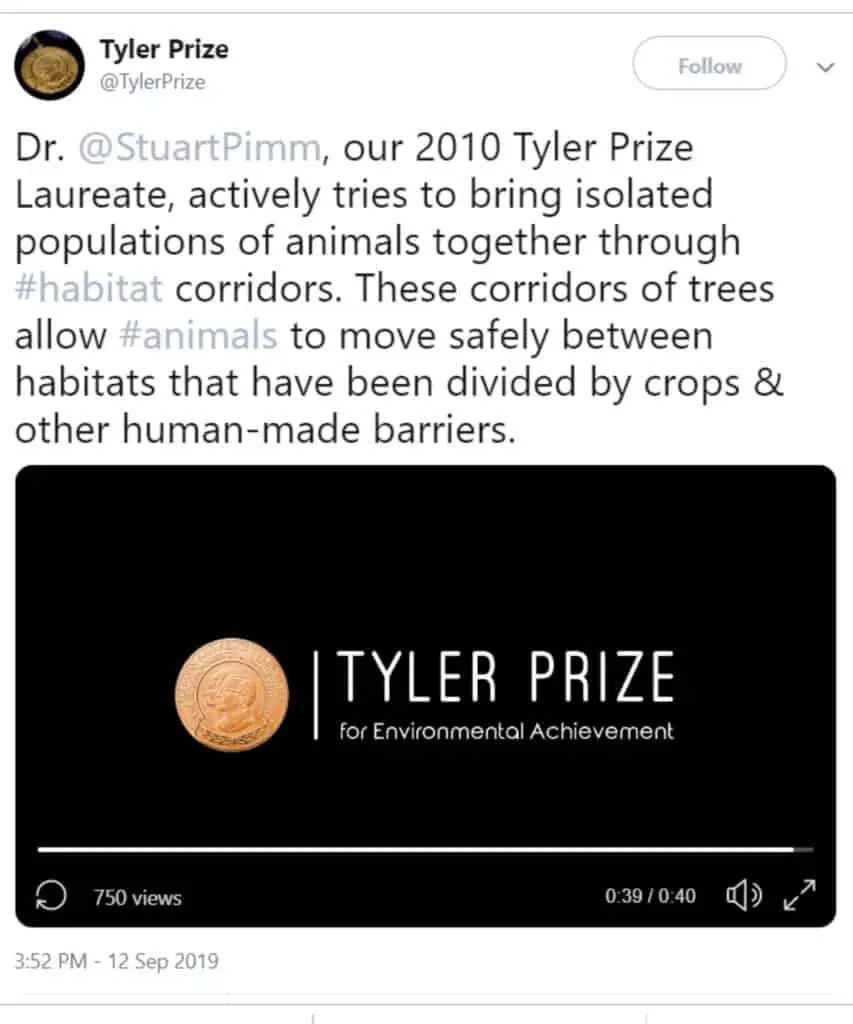
Yellow Fever Threatens Golden Lion Tamarins
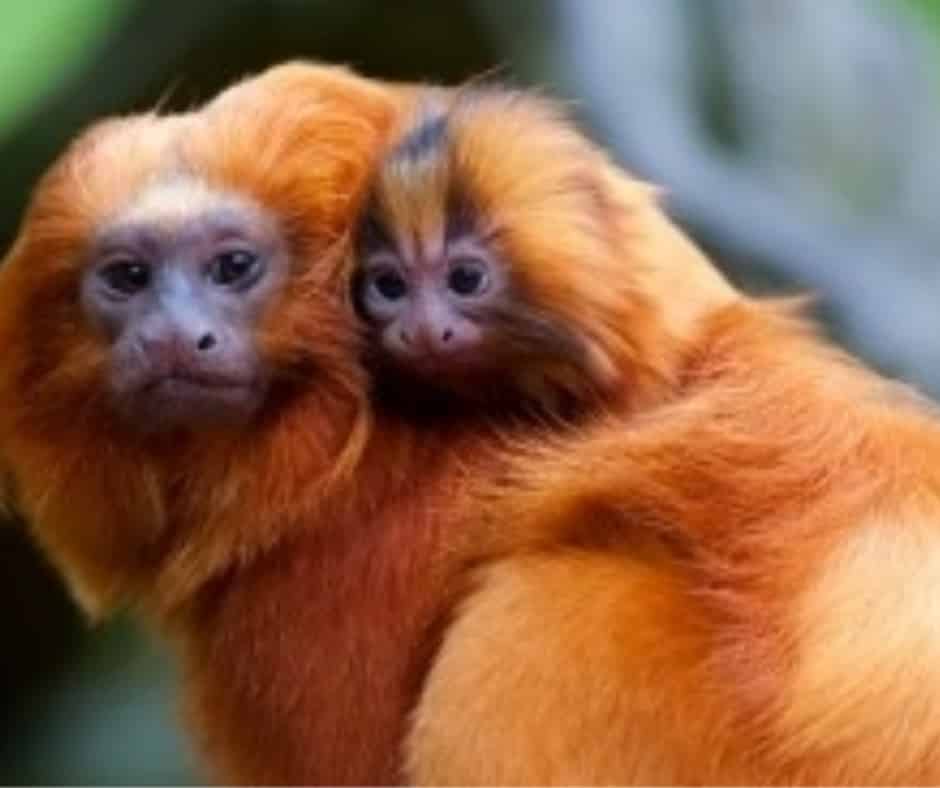
September 10, 2019: Troubling news for golden lion tamarins. Yellow fever threatens one of the world’s most renowned conservation successes.
YELLOW FEVER OUTBREAK THREATENS ENDANGERED GOLDEN LION TAMARINS
The wild population of golden lion tamarins suffered a dramatic decline in the wake of the worst yellow fever outbreak in Brazil in 80 years. According a study published today in the journal Nature.com, the wild tamarin population has declined by 32 percent since 2014. This reduction marks the first drastic loss the species has faced in nearly 40 years.
Prior to the yellow fever epizootic, golden lion tamarin numbers had been steadily increasing—from a few hundred in the 1970s to 3,700 in recent years. The team at Saving Nature joined the effort to save the golden lion tamarin in 2012, helping connect them to larger forest expanses capable of supporting viable populations.
A recent population census by the Associação Mico-Leão-Dourado (AMLD; golden lion tamarin association), triggered by the spread of yellow fever throughout the region, found only 2,500 survivors. A reduction in population size of this magnitude will make it difficult for golden lion tamarins to find unrelated mates, resulting in inbreeding and local extinctions of the species.
Yellow fever was first detected near their geographic range in early 2017, and reports of sick or dead tamarins surfaced in 2018. The AMLD is currently hard at work to reduce the devastating impact of yellow fever on golden lion tamarins. Their multifaceted approach includes an ongoing population census, yellow fever risk and acquired immunity assessments, strategic translocations, and a vaccination program.
Click here to read the full publication.

